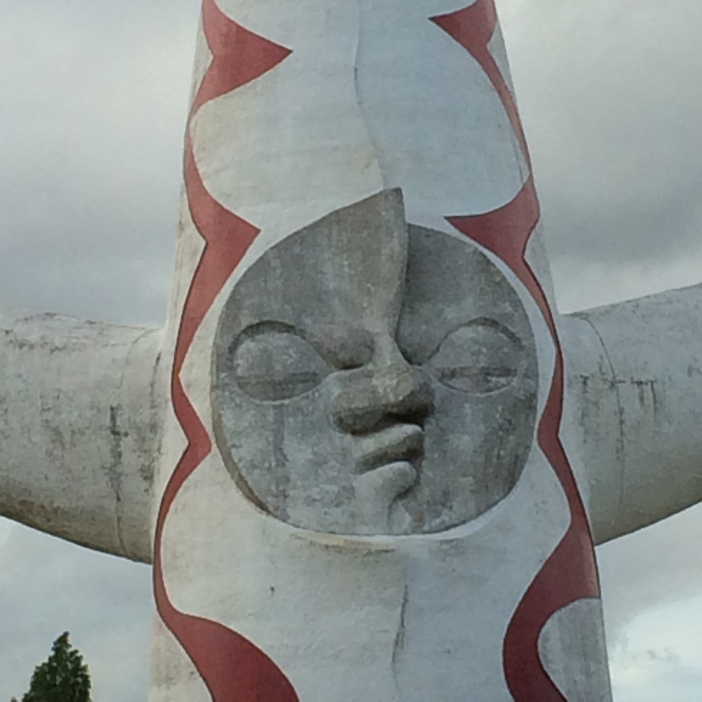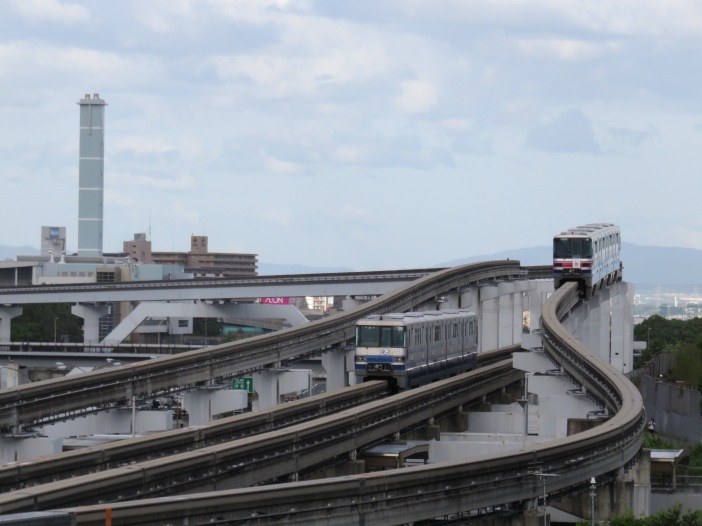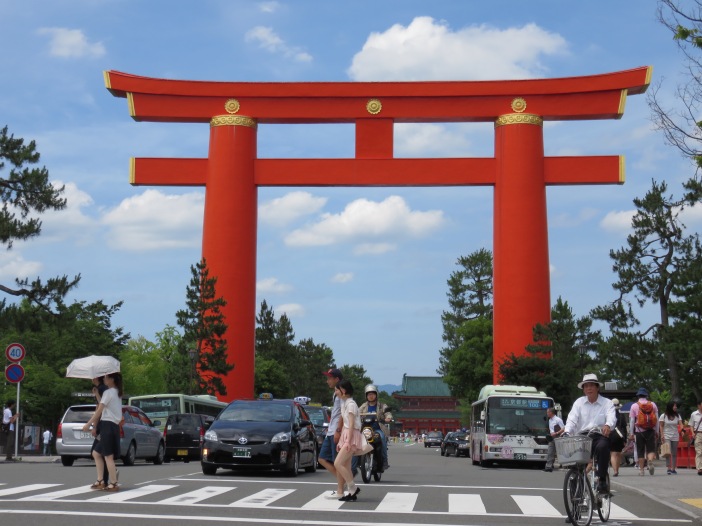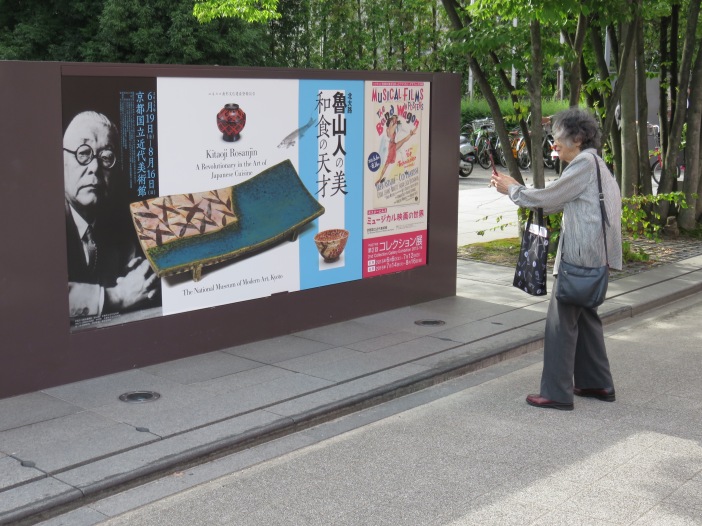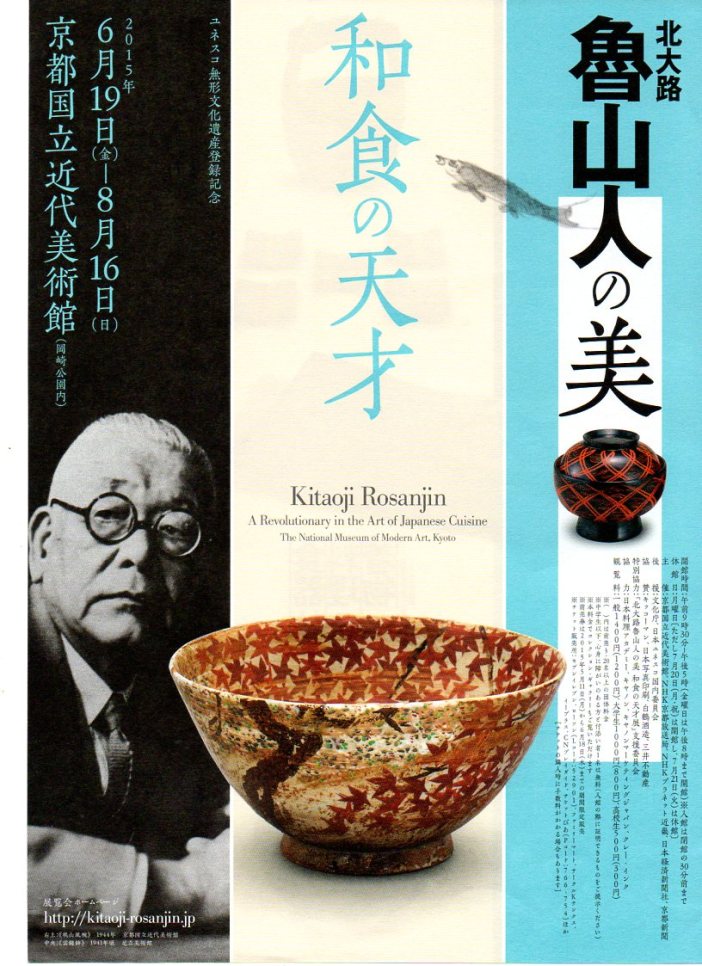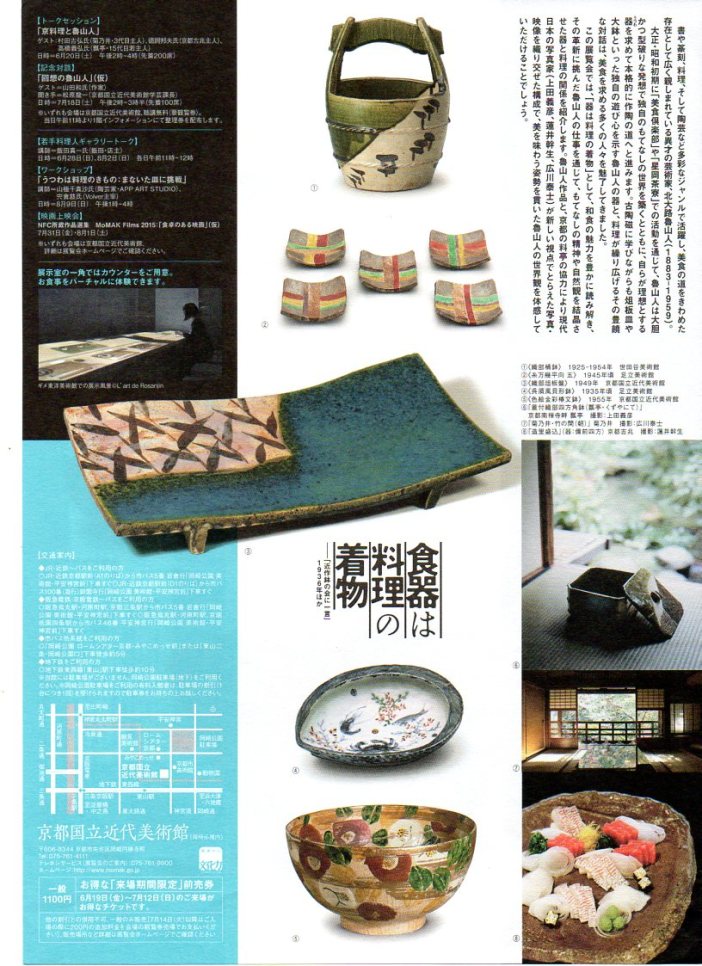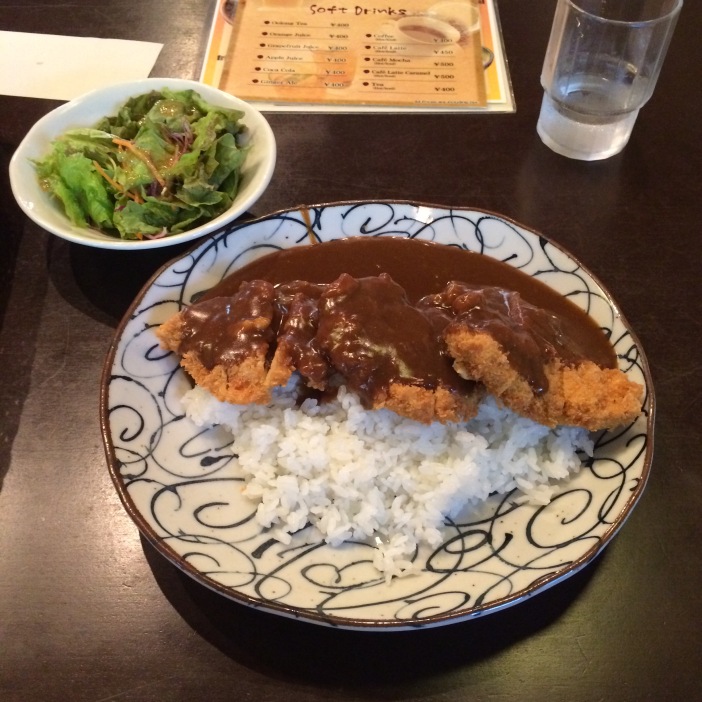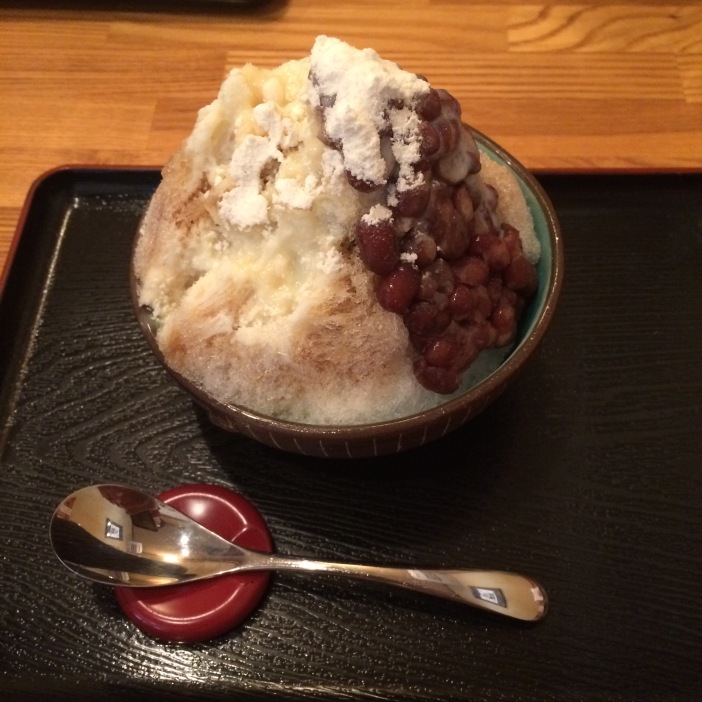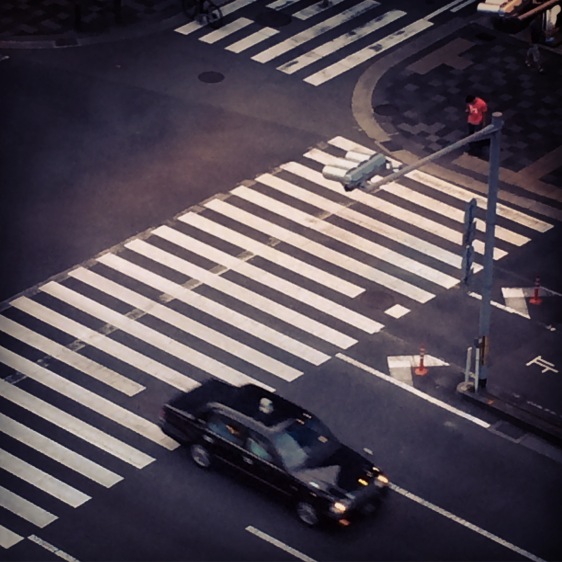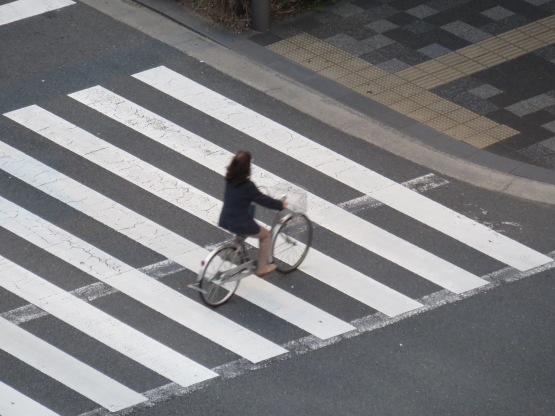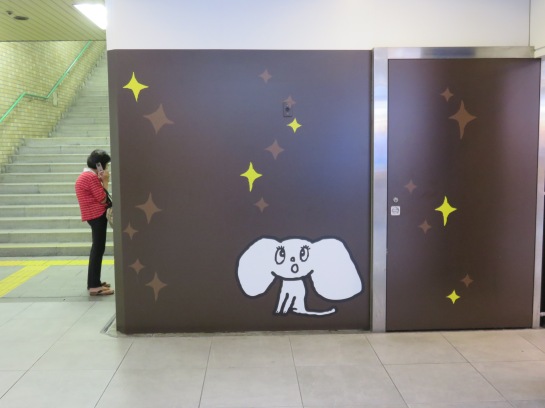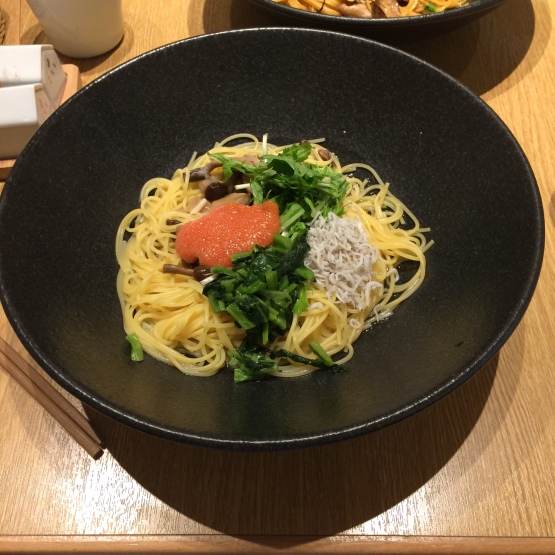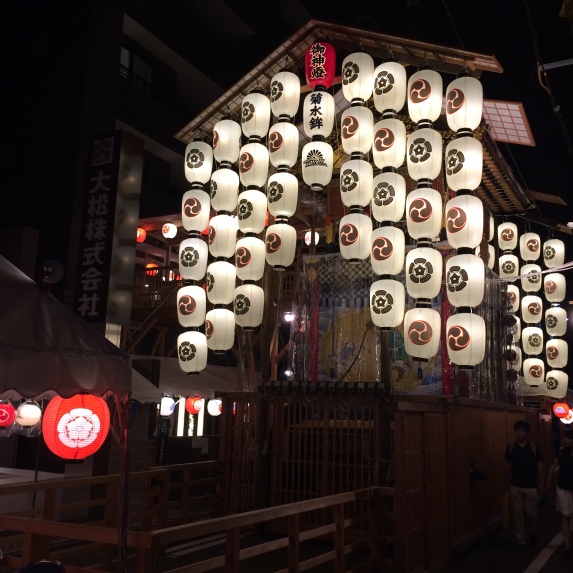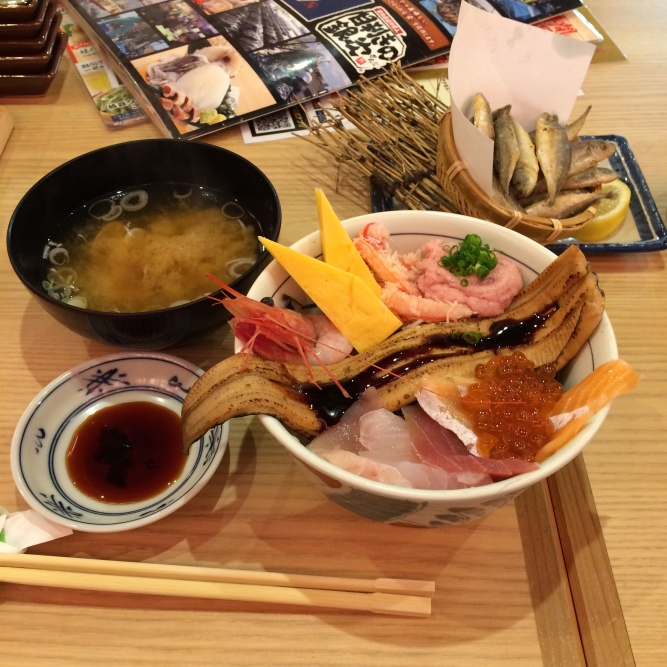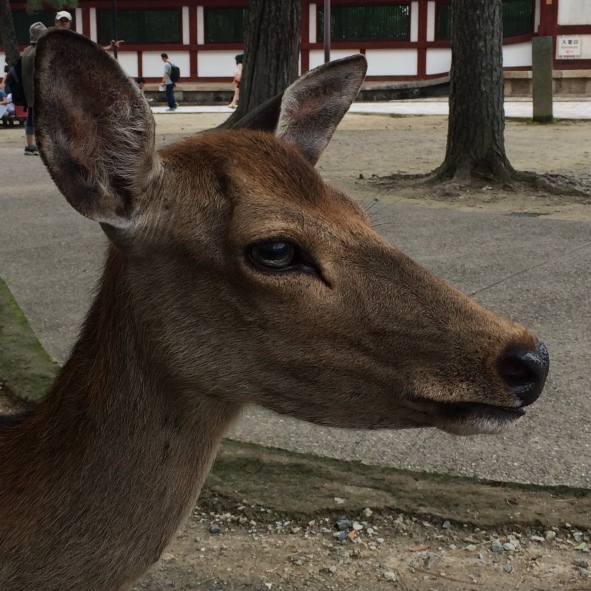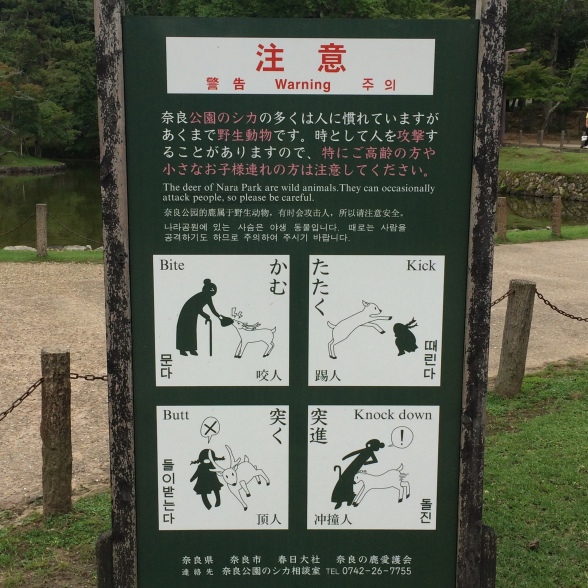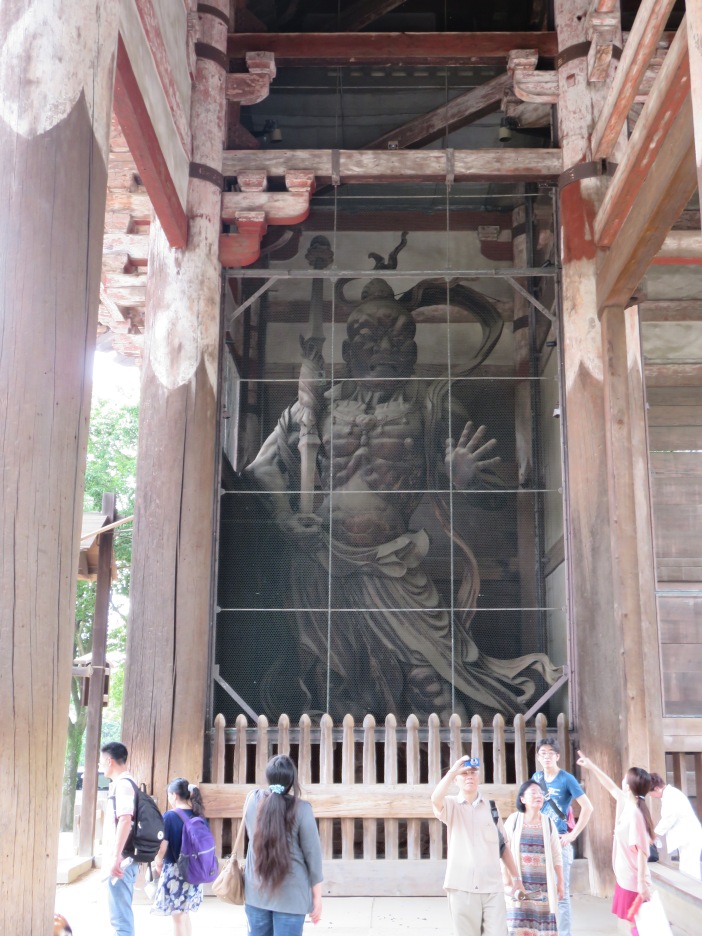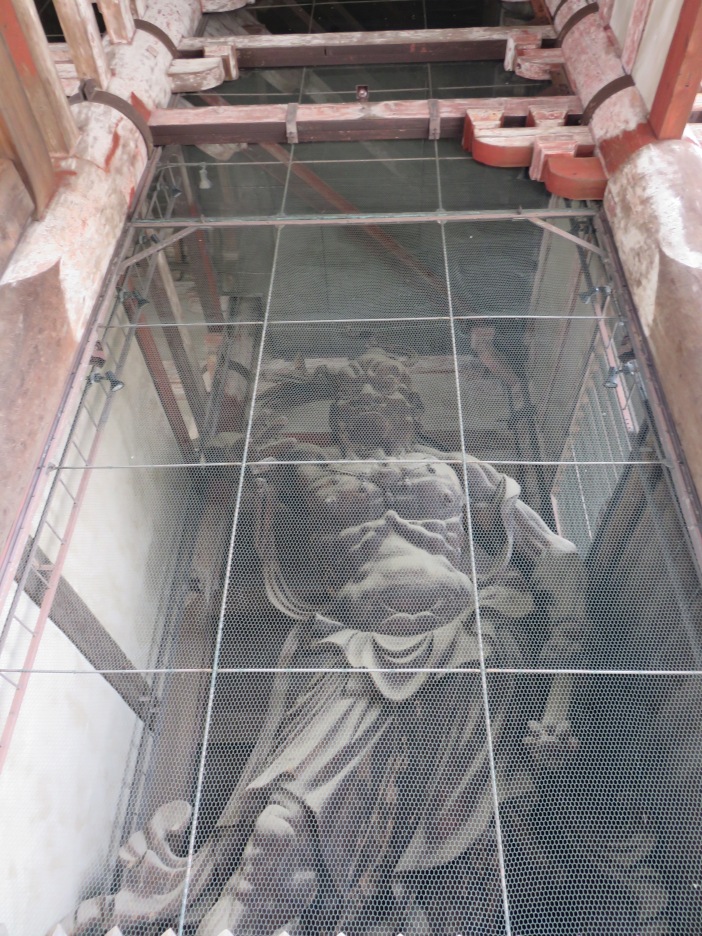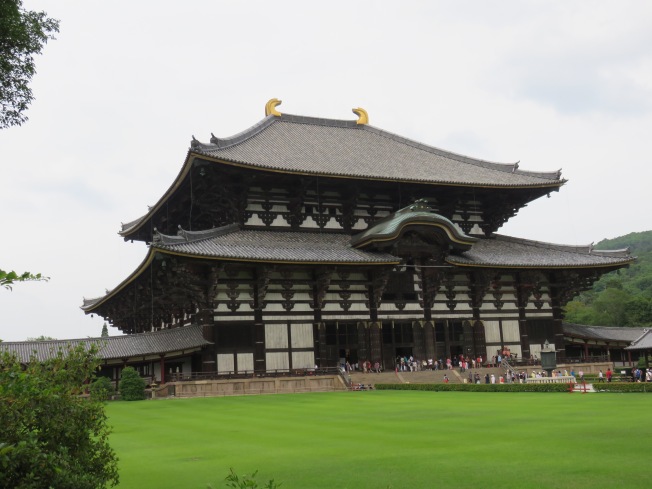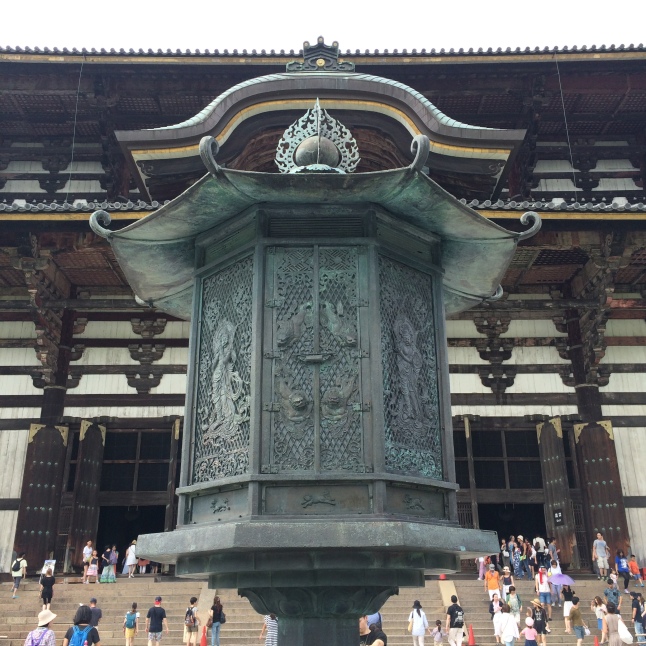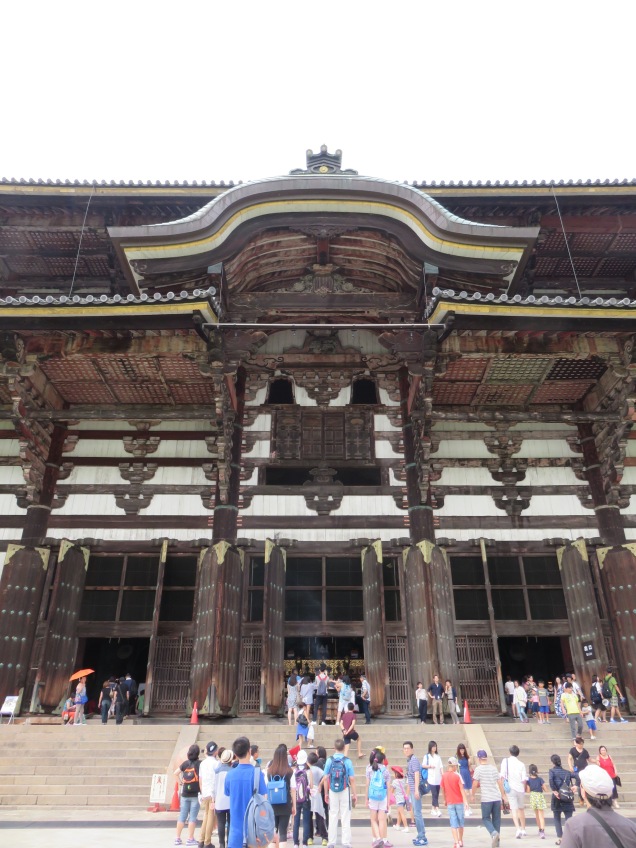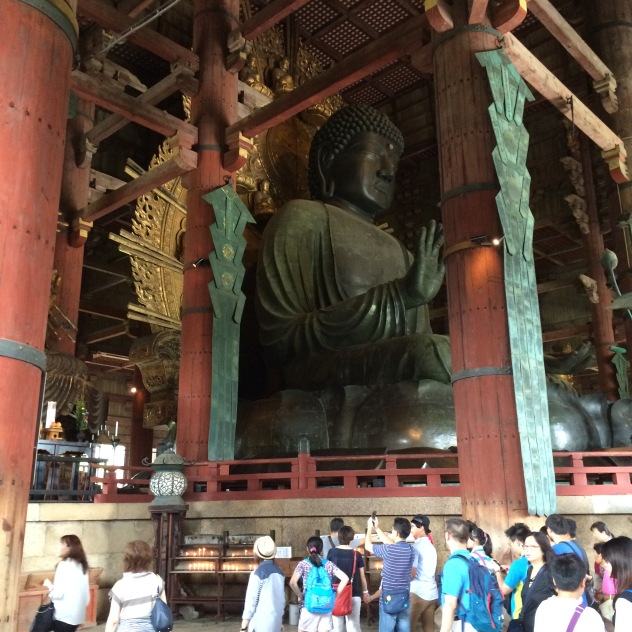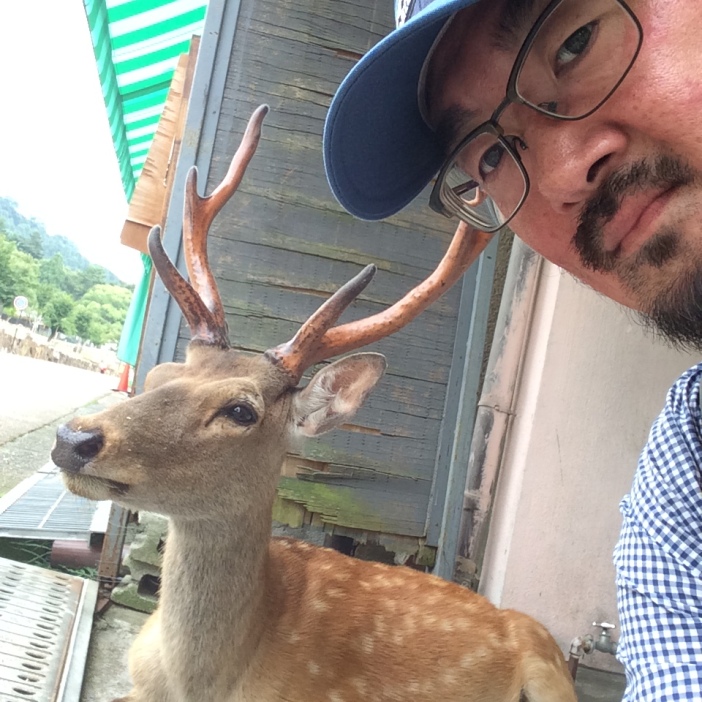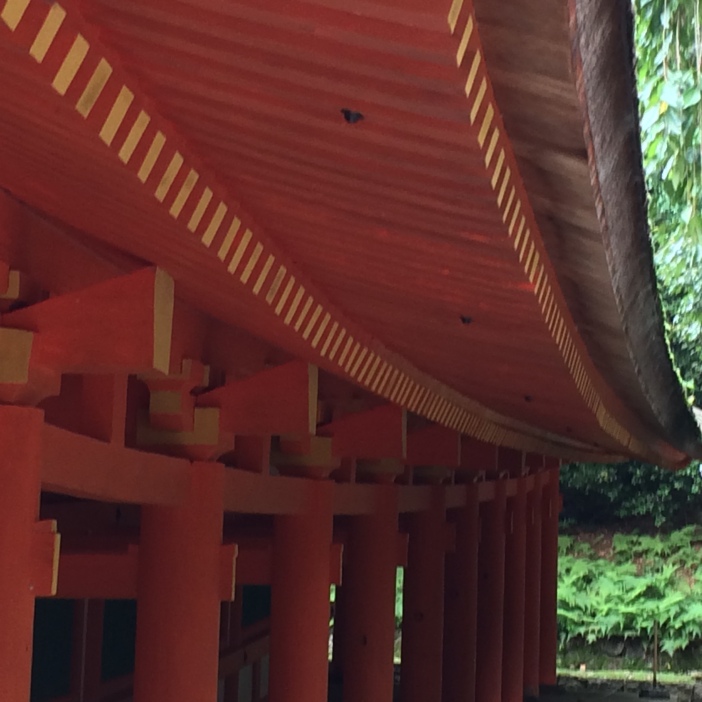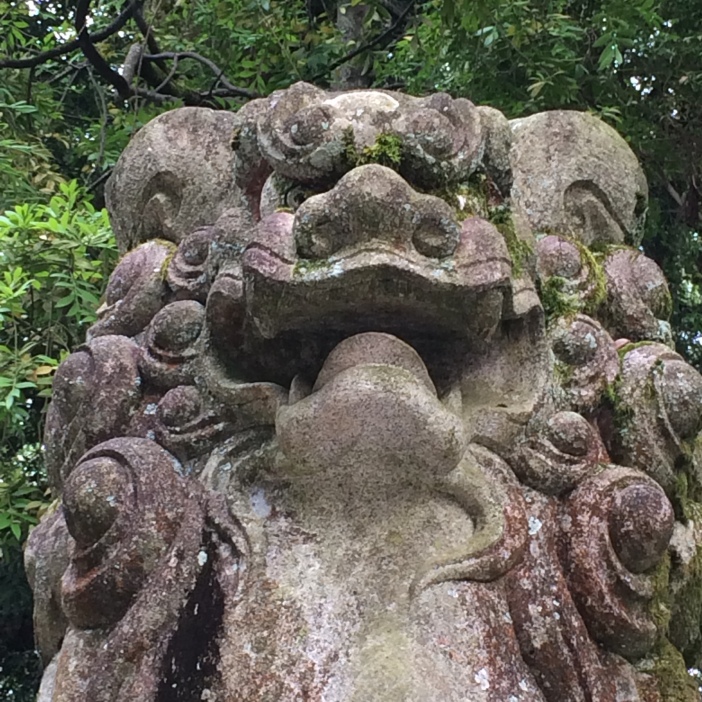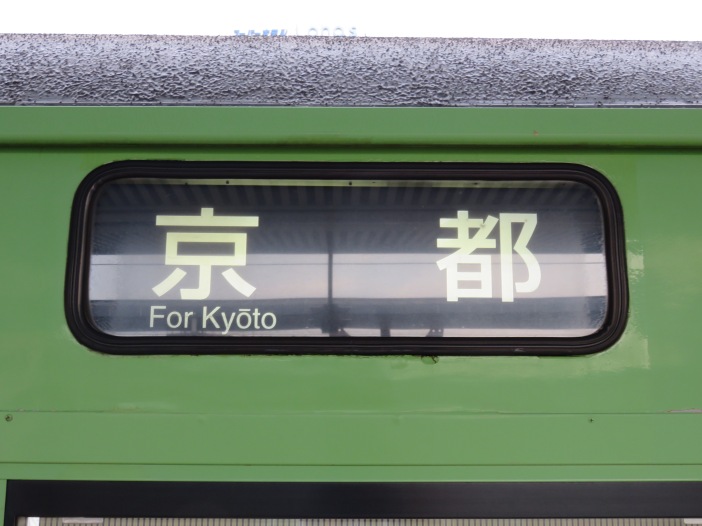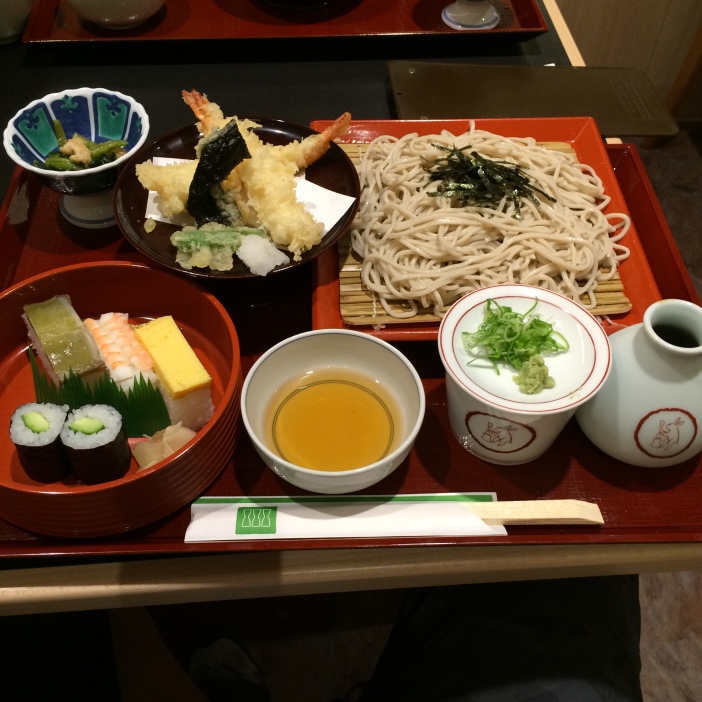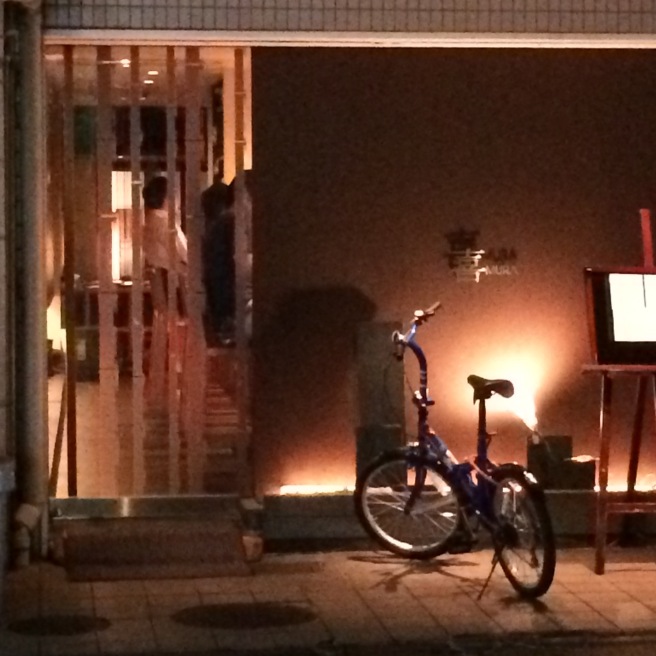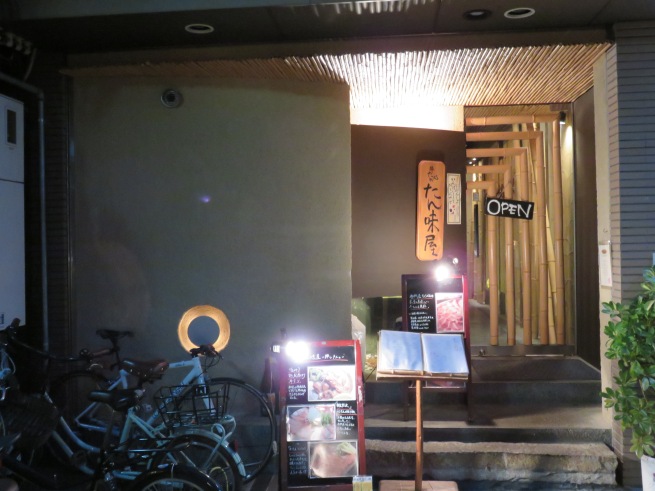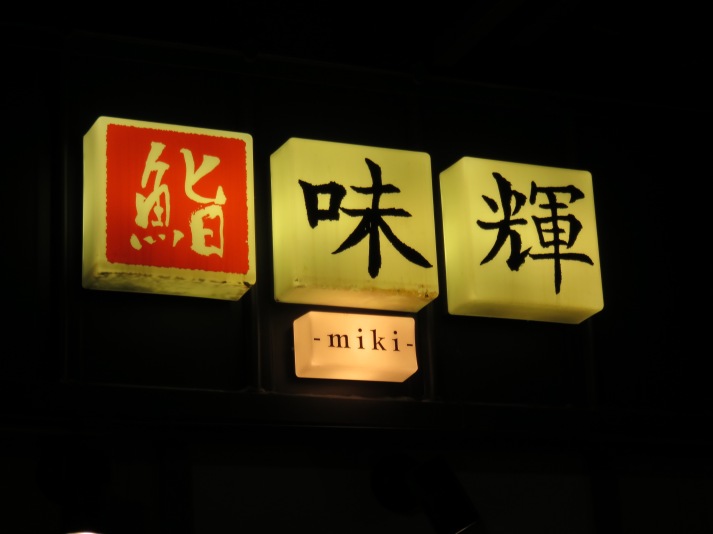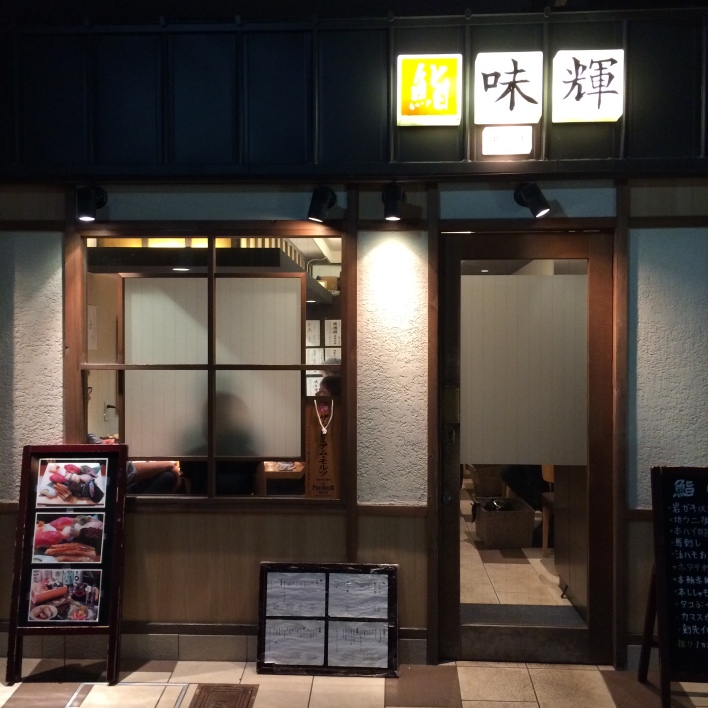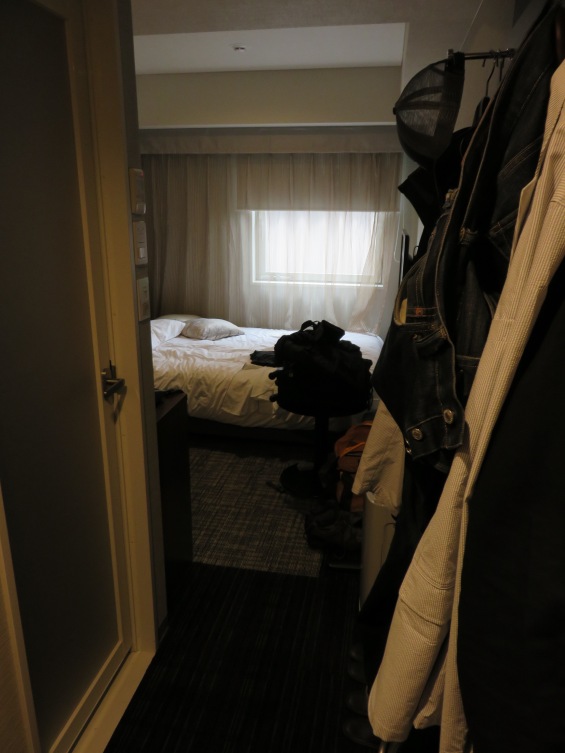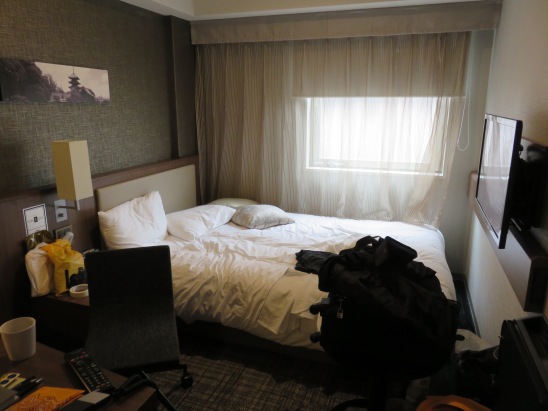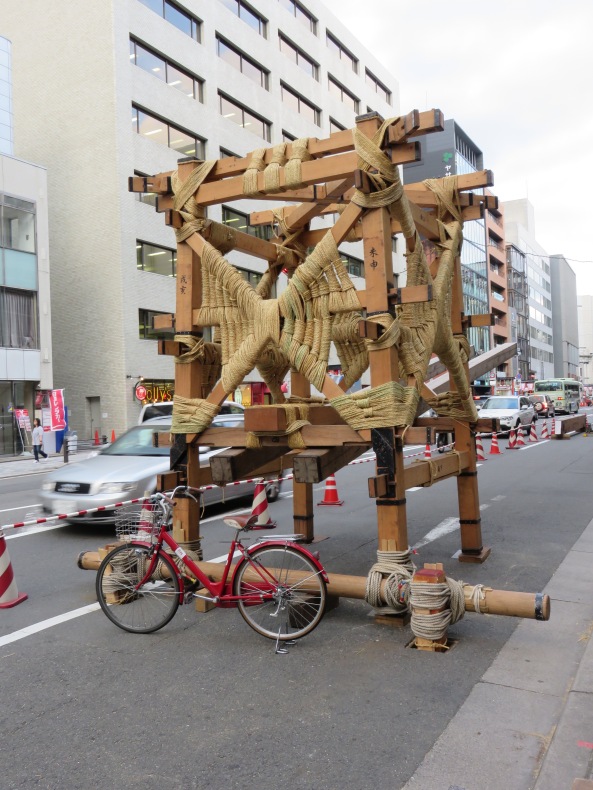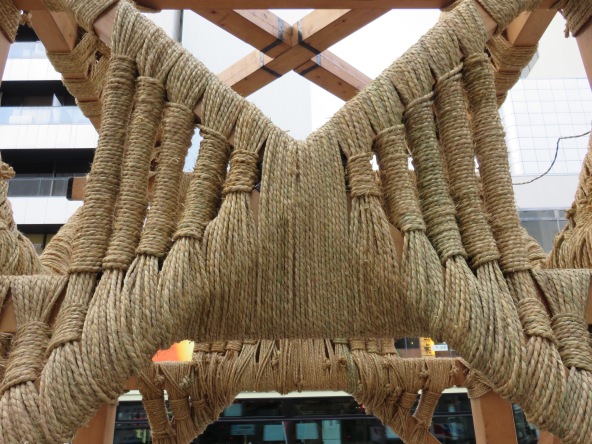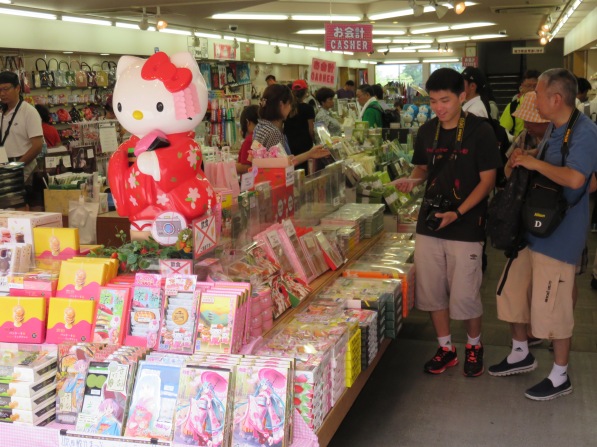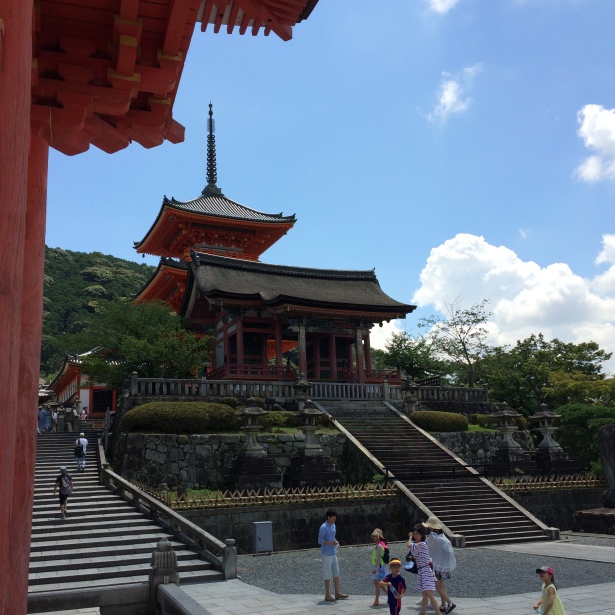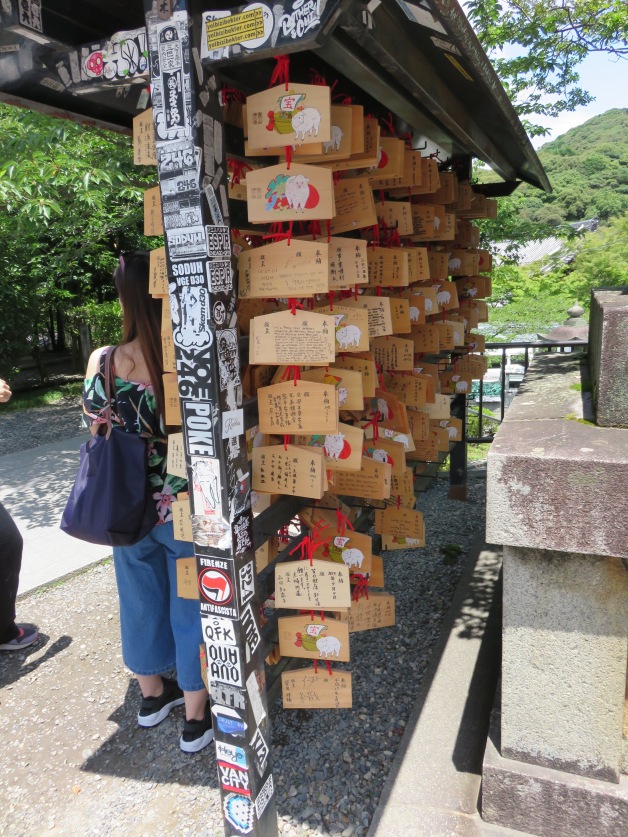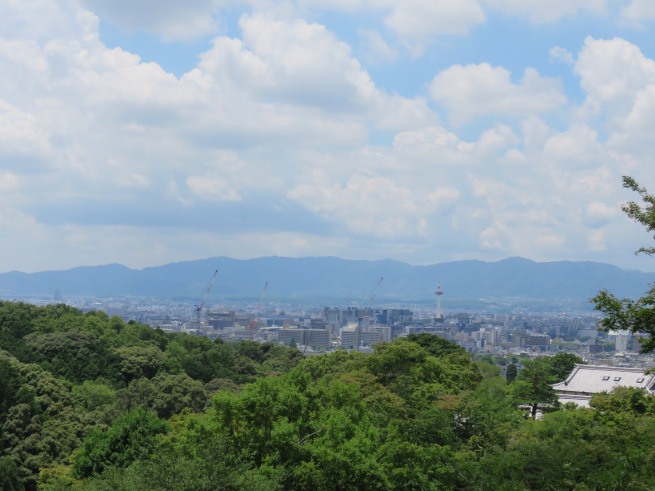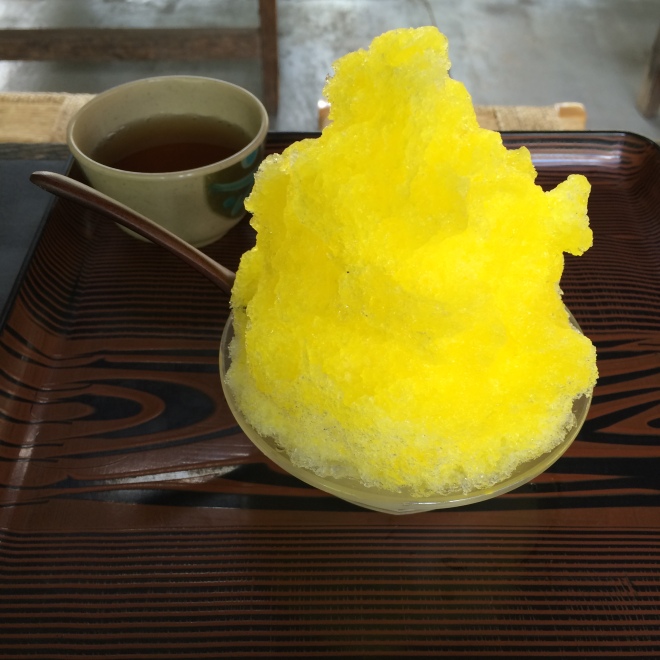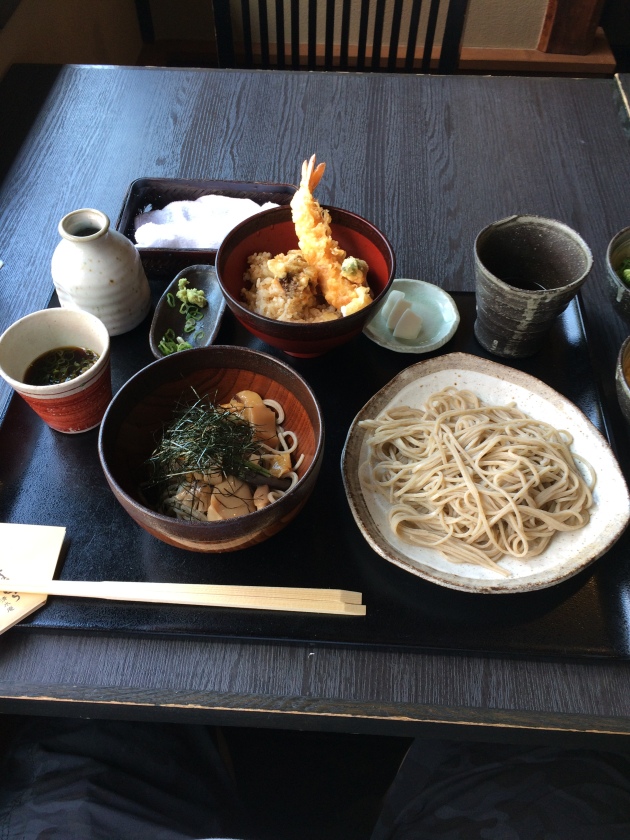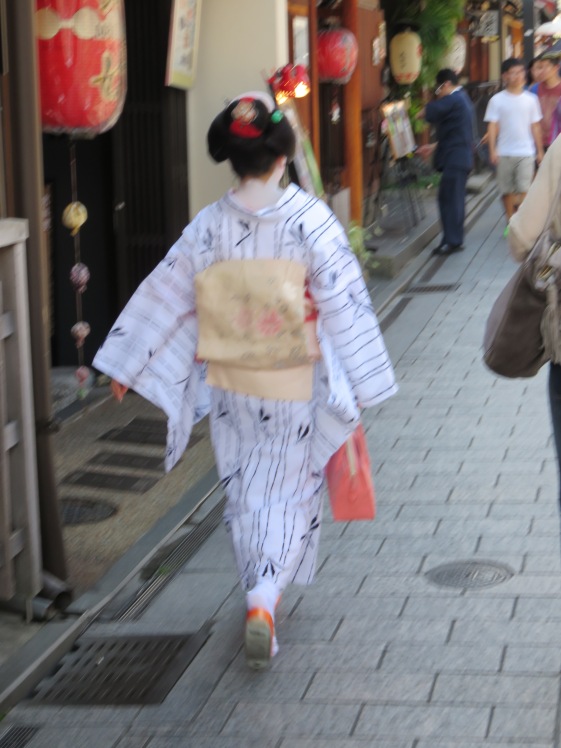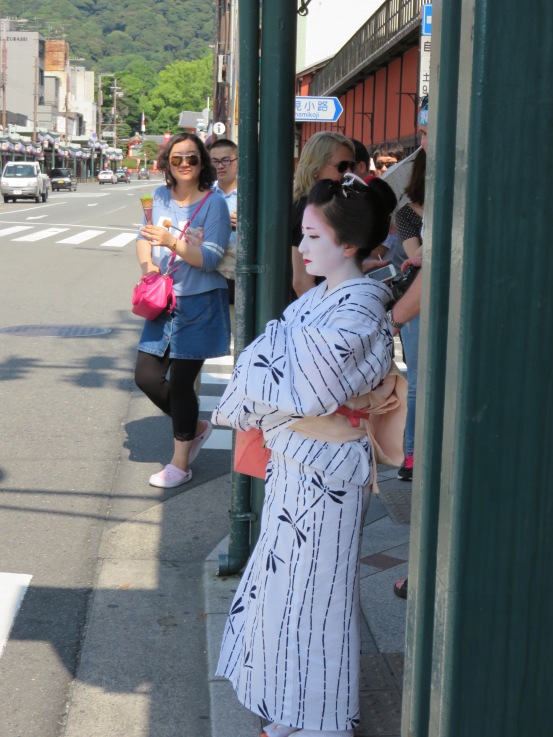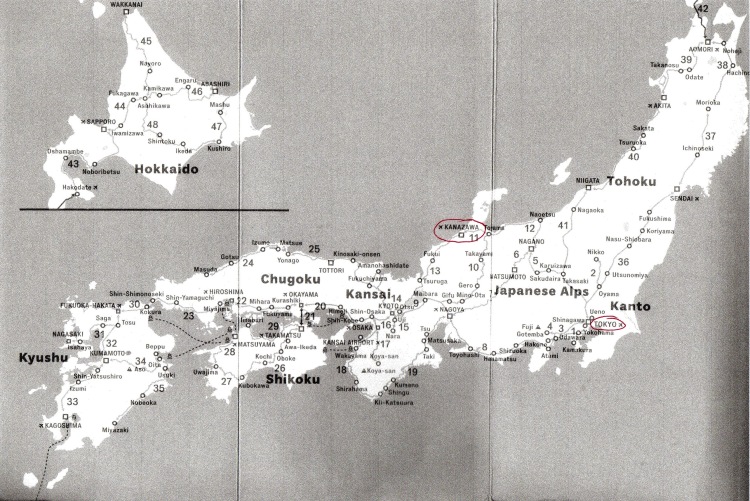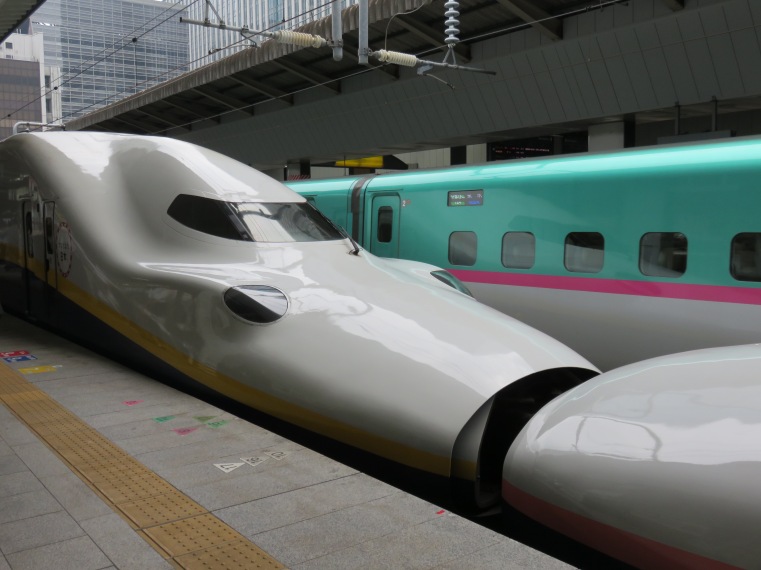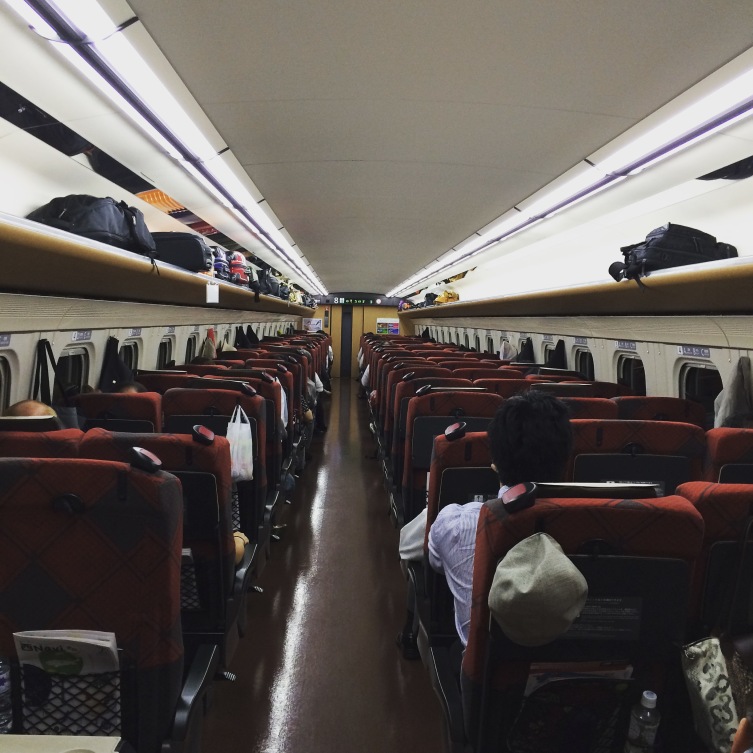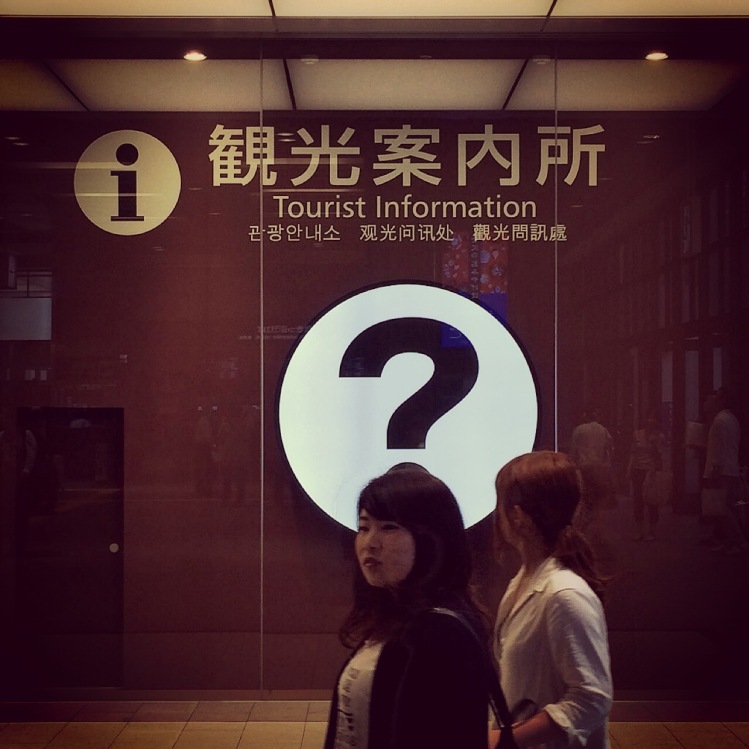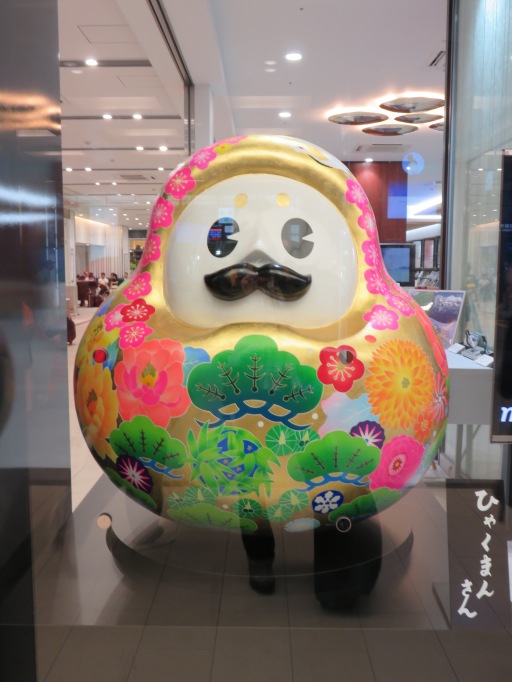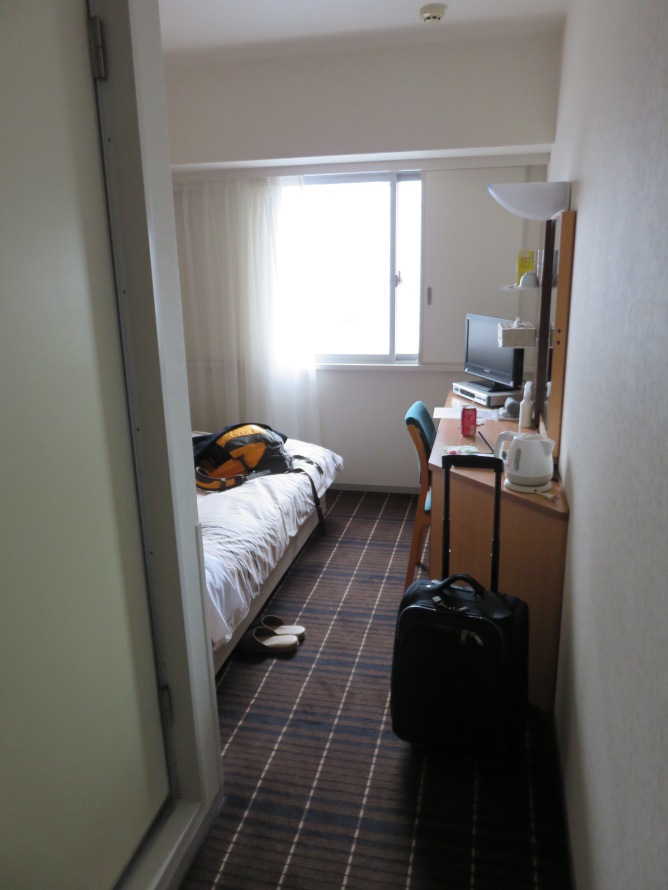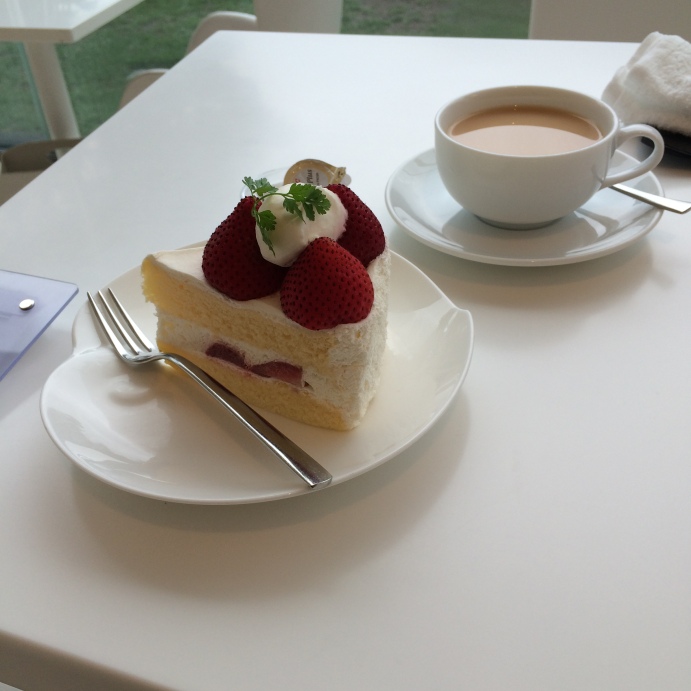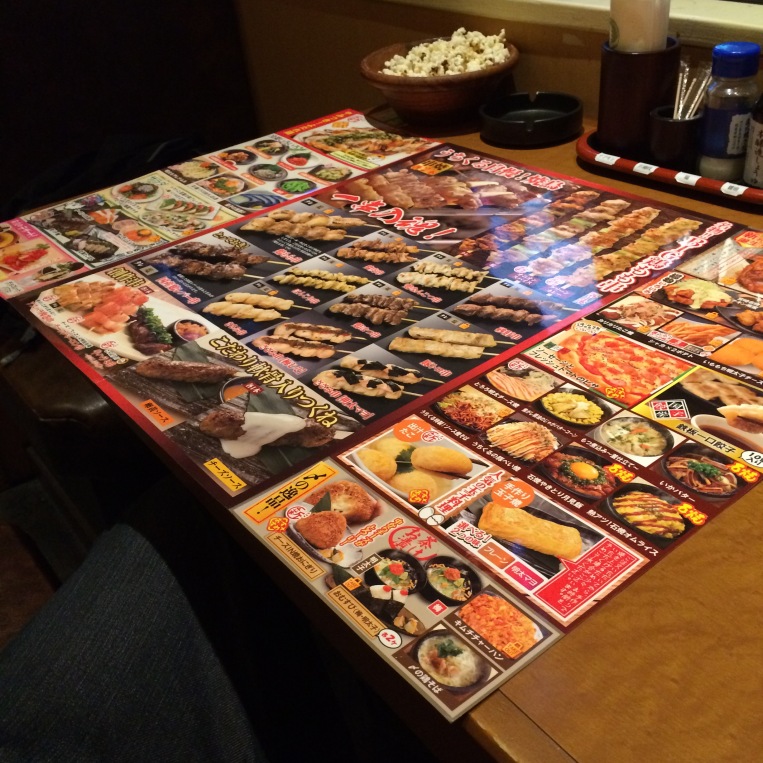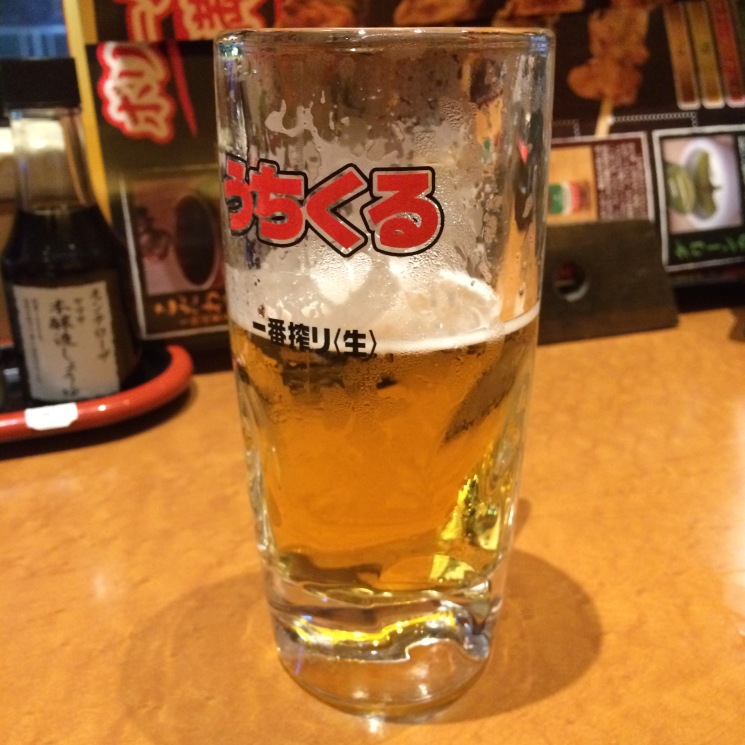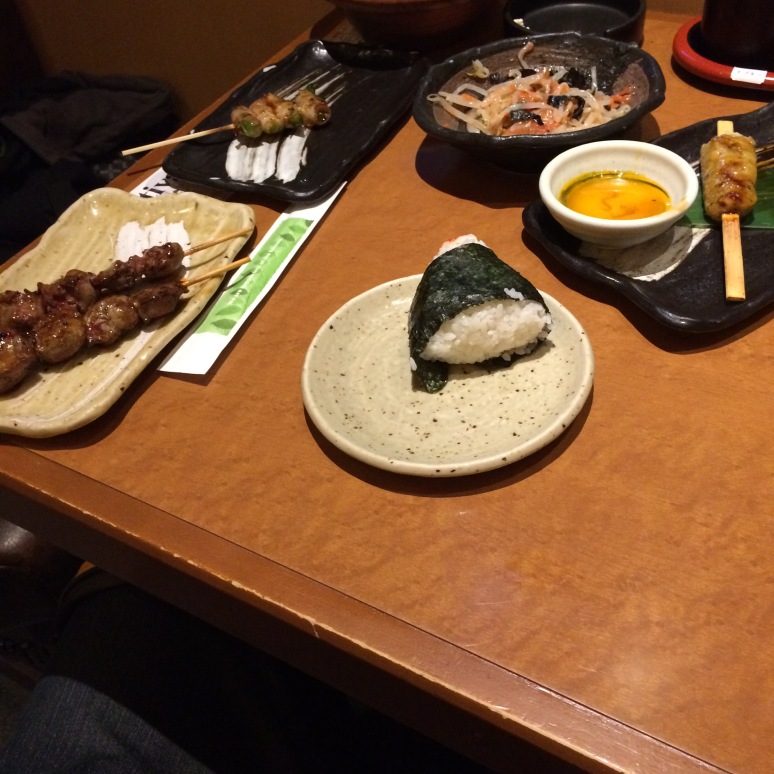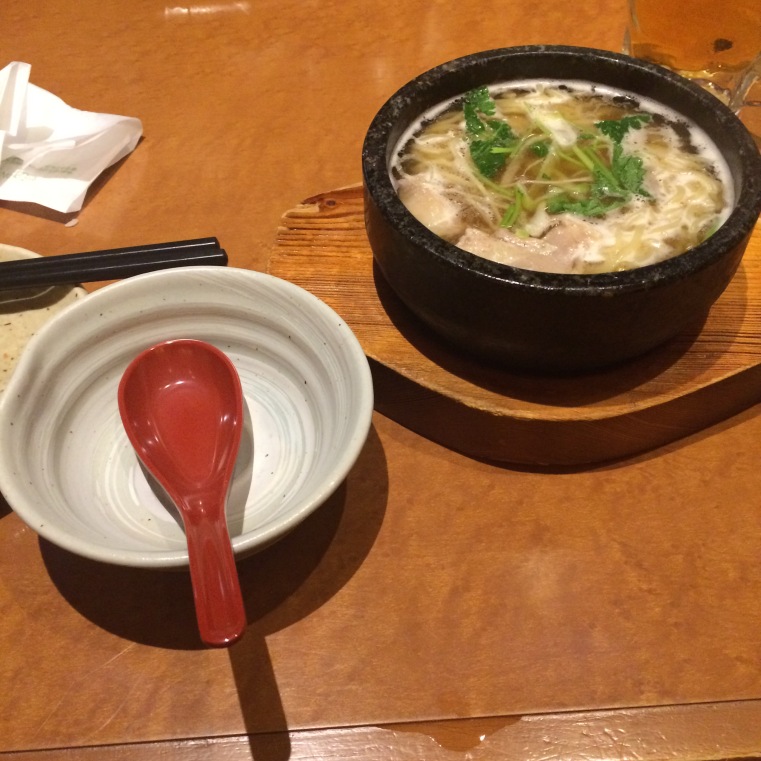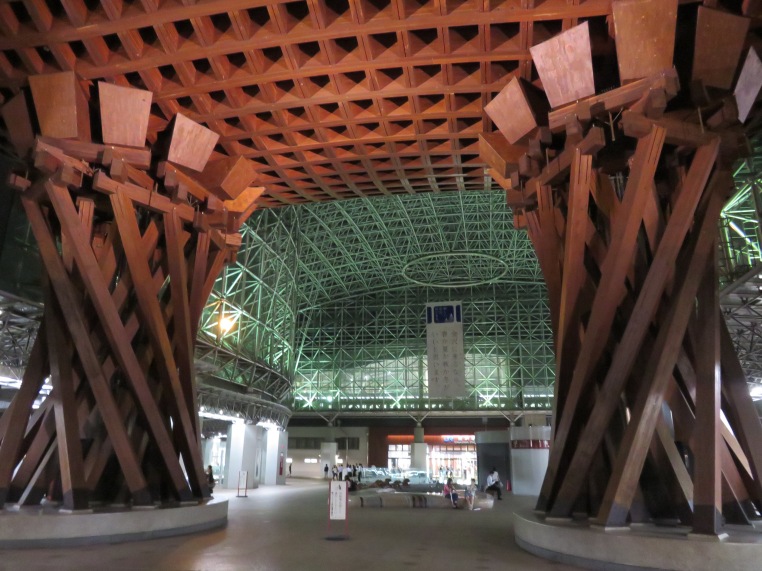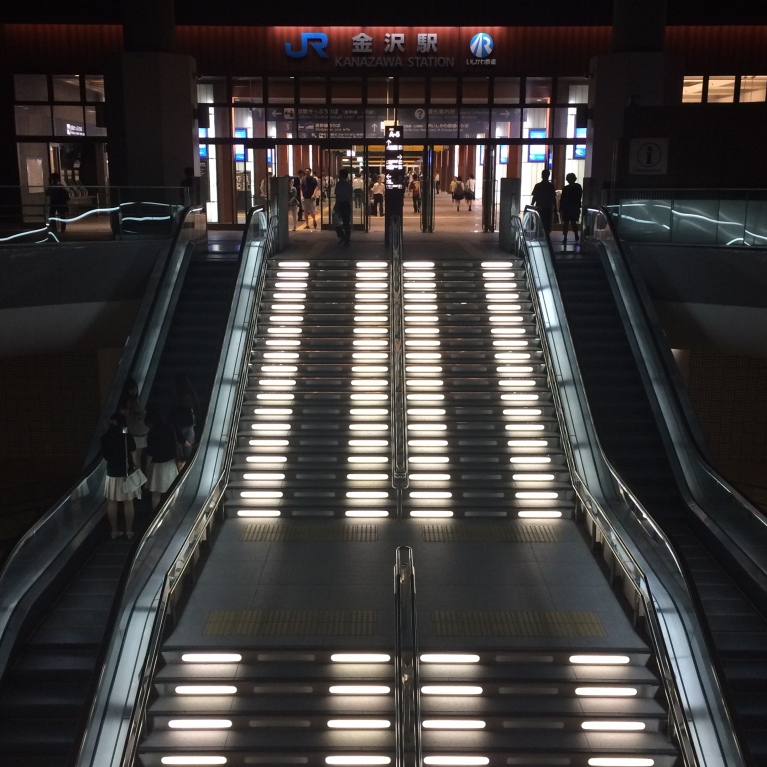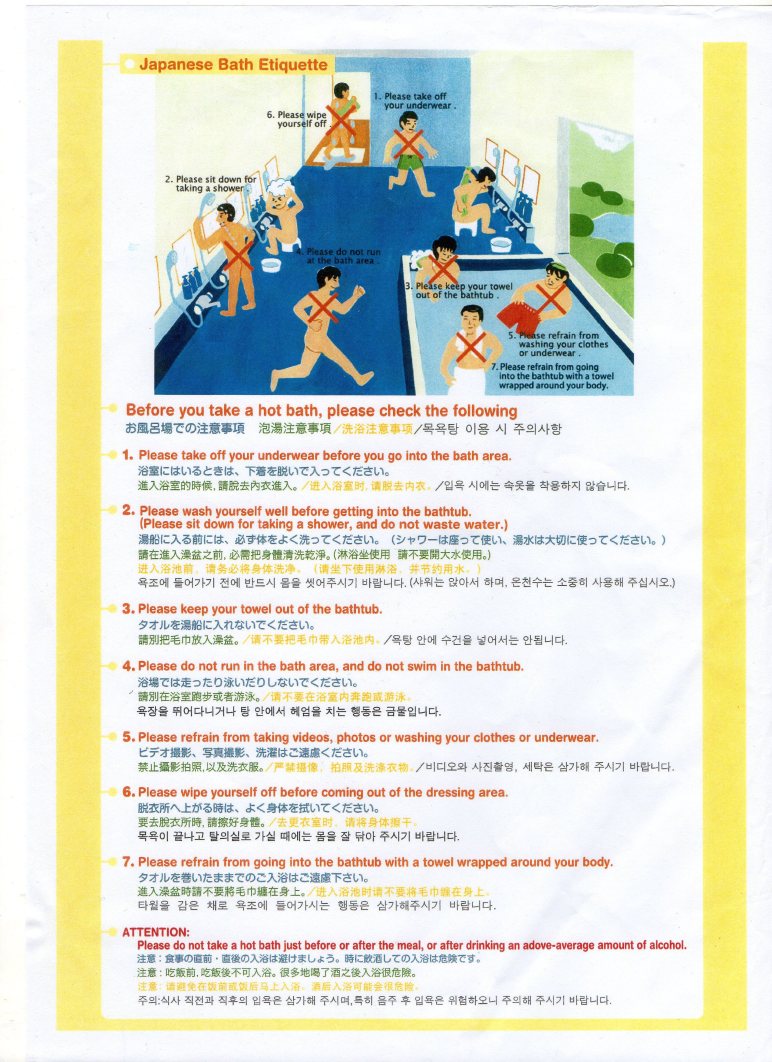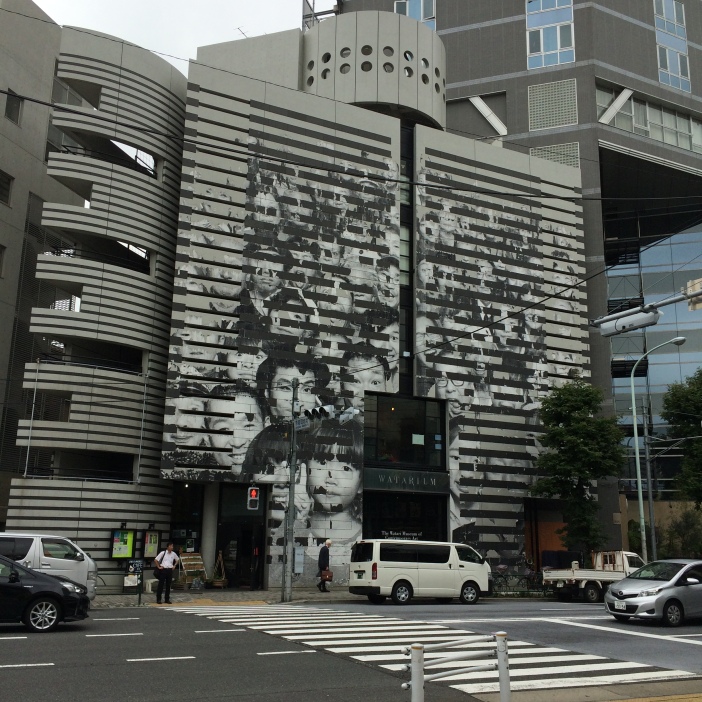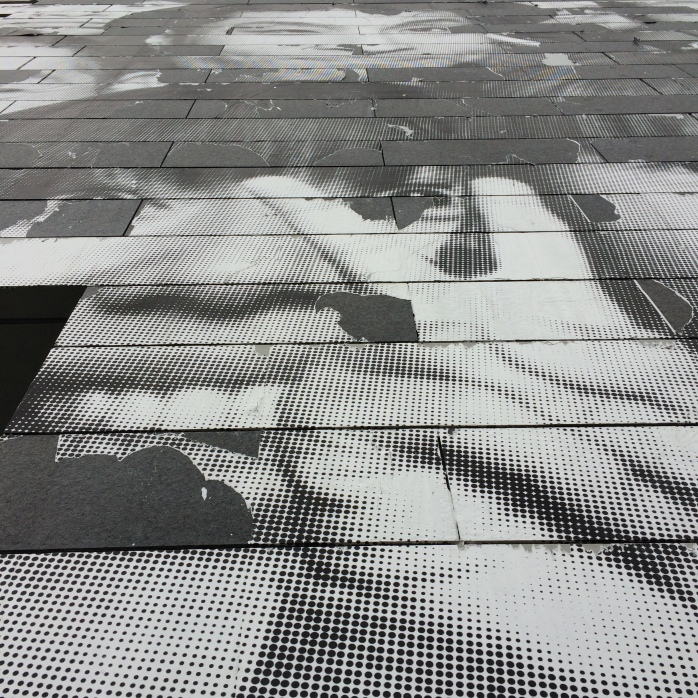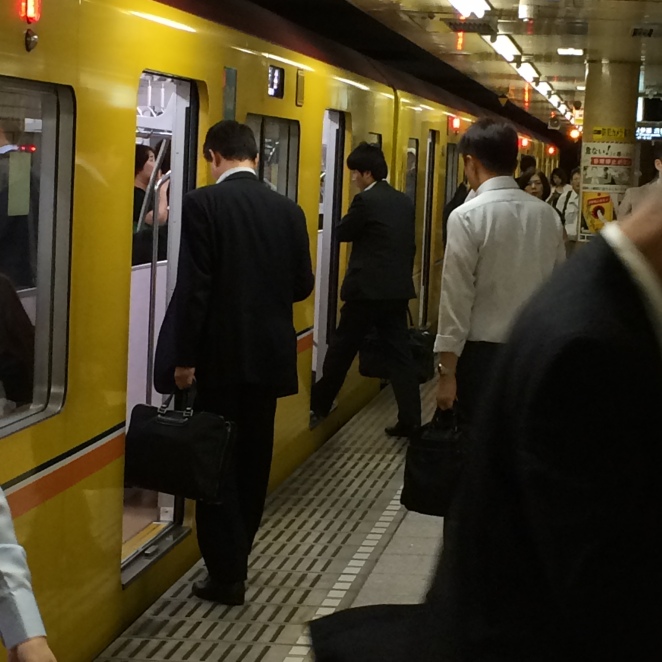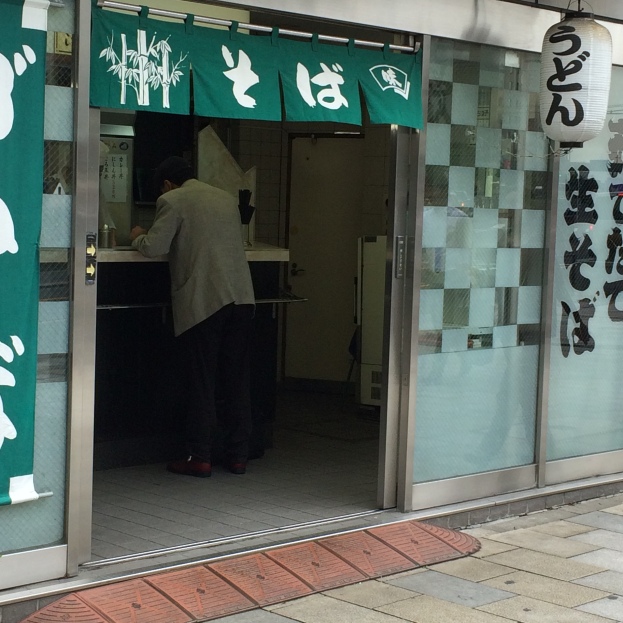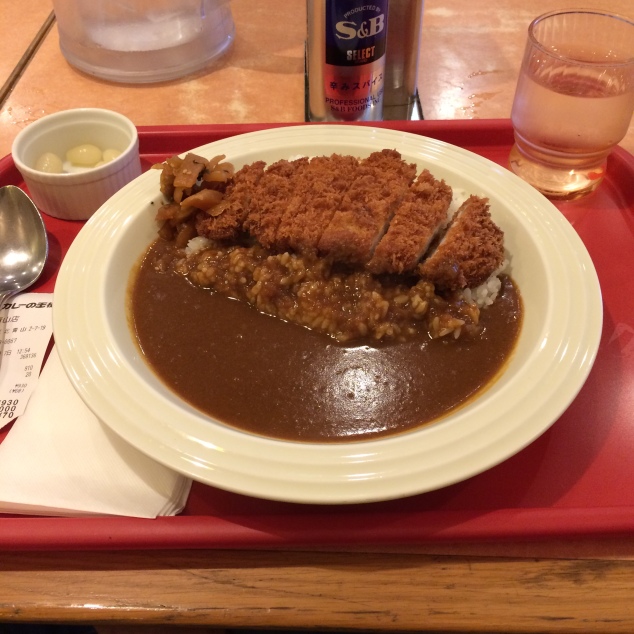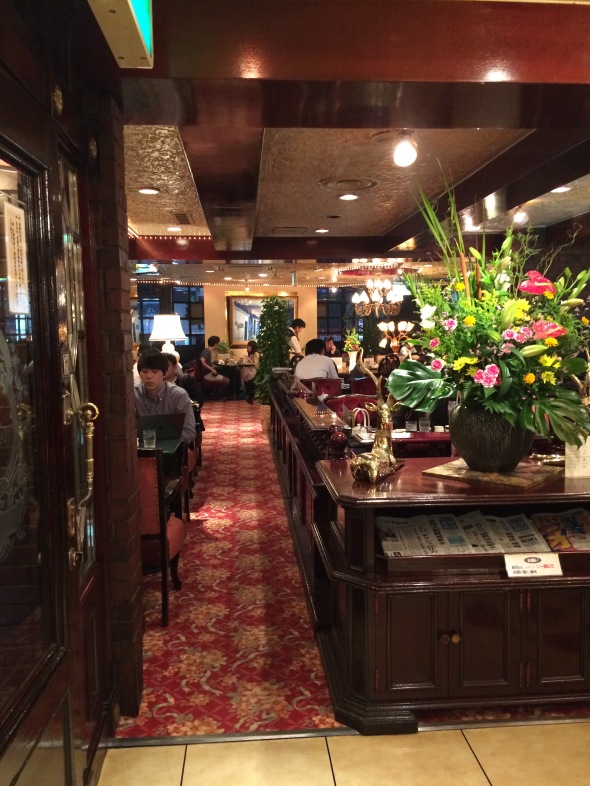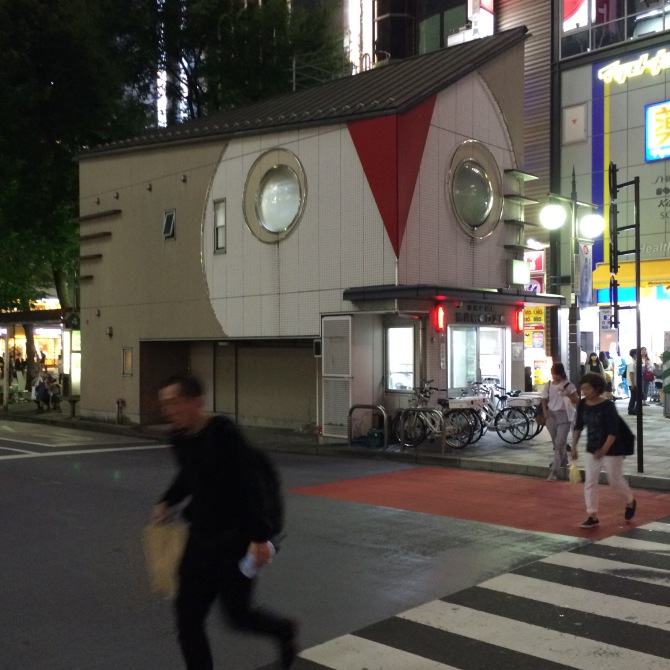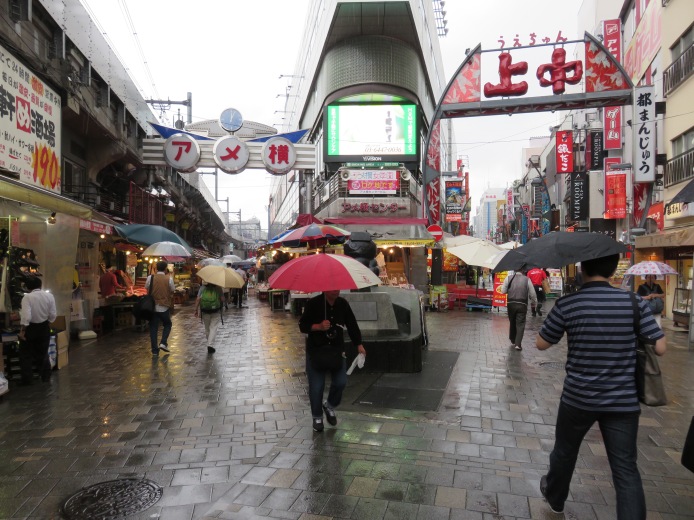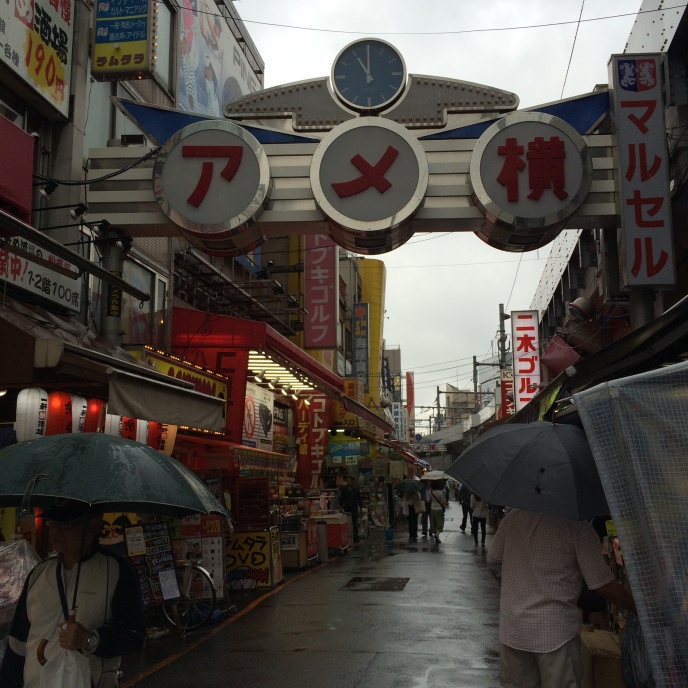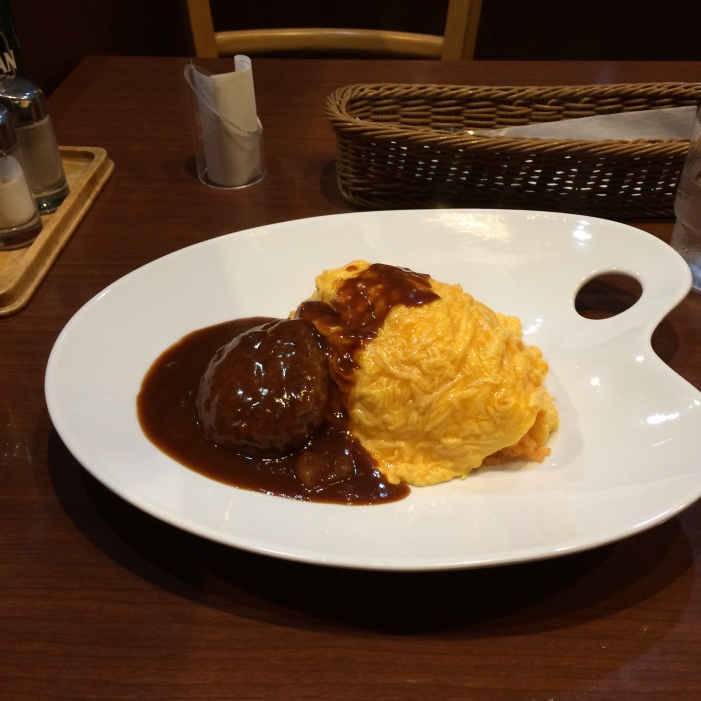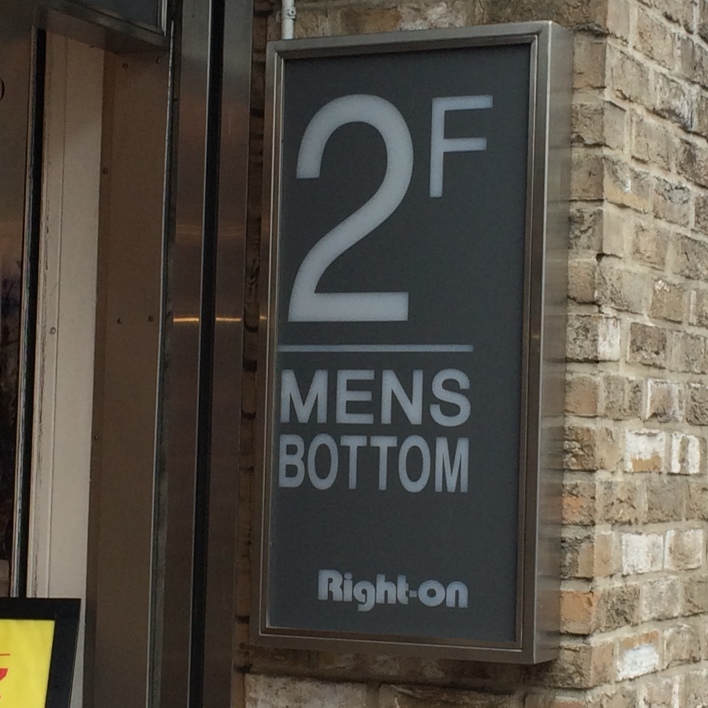I awoke to a day with no rain and since for whatever reason I hadn’t selected a breakfast option and didn’t fancy the hotel buffet so headed out. My breakfast in the end was a couple of bread rolls from a chain of bakeries called Donq, it seems they’ve been around in Japan for quite a while since my Japanese friends all knew it whenever I mentioned it. I found it amusing that in Japan that I should end up with a plastic carrier bag adorned with a map of Paris on it. I suppose I take it for granted but the Japanese do do very good artisan bread.
My plan was to take the 1519h train from Kanazawa to Kyoto. This would give me time to explore Kanazawa a little more. After asking for opinions on where to go with a limited time to the tourist office, the consensus seemed to be to head for the Higashi Chaya District.
The buildings there are an opportunity to see authentic buildings from the Edo period and something which many people expect to be found all over Japan having seen those style buildings in films but in fact are not so frequent anymore. Kanazawa has three, well preserved chaya (lit. teahouse) districts, Higashi Chayagai (Eastern Chaya District), Nishi Chayagai (Western Chaya District) and Kazuemachi. A chaya was where guests were entertained by geisha, I will not be going into detail about geisha, since I cannot afford to be entertained by or have never been invited to any function where one or more have been present. For what a geisha is and does, please click on the blue link for the wikipedia page, thank you.
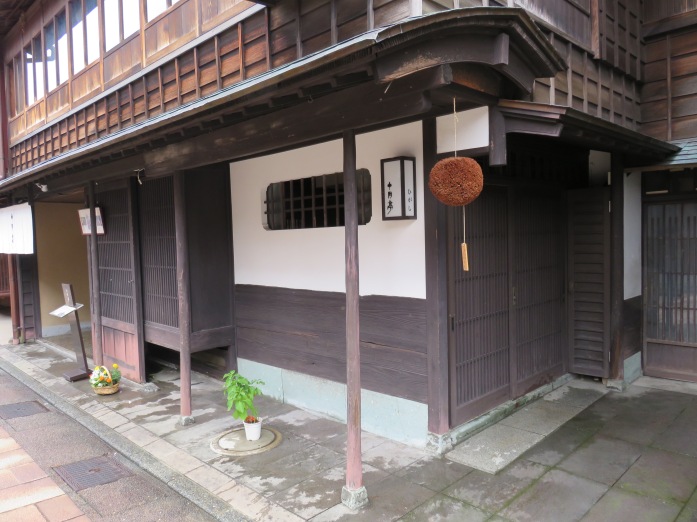
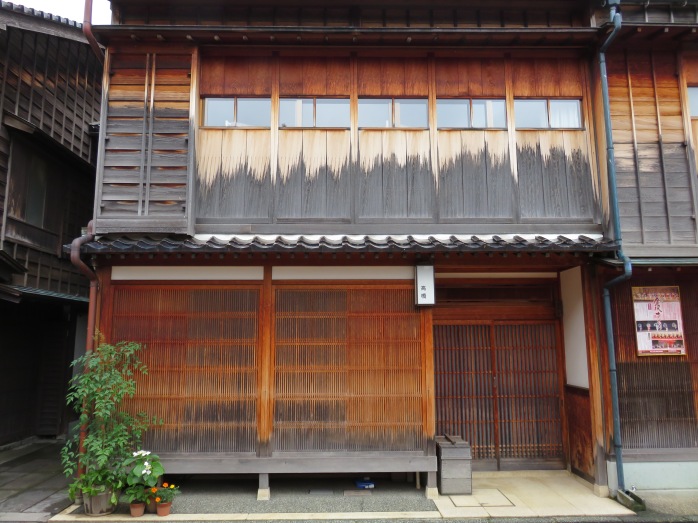
One of the tea houses there has been preserved and is now a museum, another is open to the public, for the most part the other buildings now house shops and cafes. There are also many shops selling the crafts of which Kanazawa is famous for and some have what are either called “traditional” or “cultural” experiences that let you get a very quick and easy feel for a craft or art. For the most part the difficult parts are done by the master craftsmen but nonetheless it can be a worthwhile experience and you get the satisfaction of having made something. One of which as well as selling gold leafed items has a tearoom entirely covered with gold leaf interior and exterior.

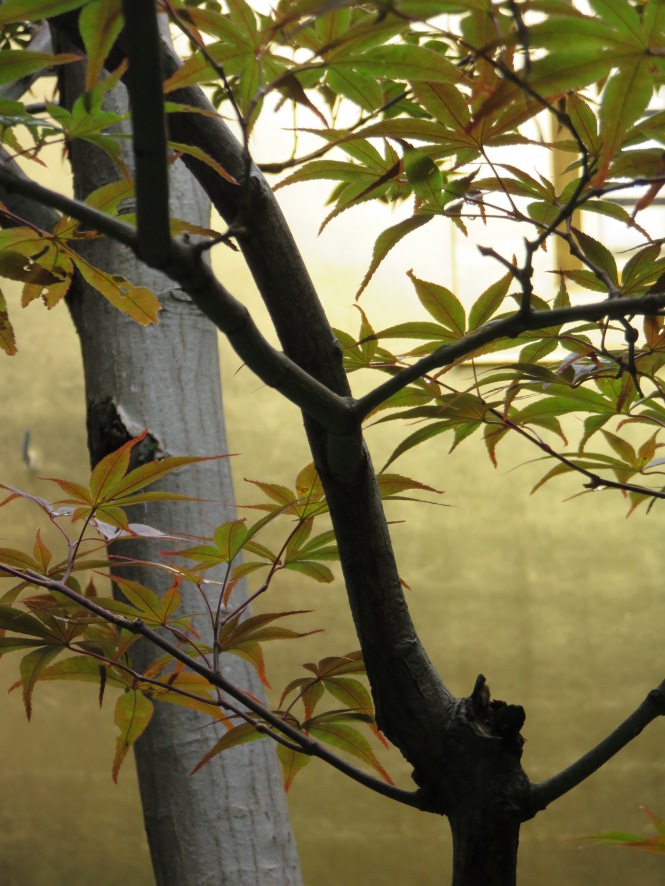
It seemed I was a little enthusiastic with my sightseeing as I arrived in the district with many places still closed, on the plus side that meant it hadn’t been swarmed upon yet and so I could wander back and forth a couple of times. There was plenty to see and it was strange stepping off a busy road and ending up on a street lined with wooden buildings.
Under the eaves of the buildings was also quite a treat…
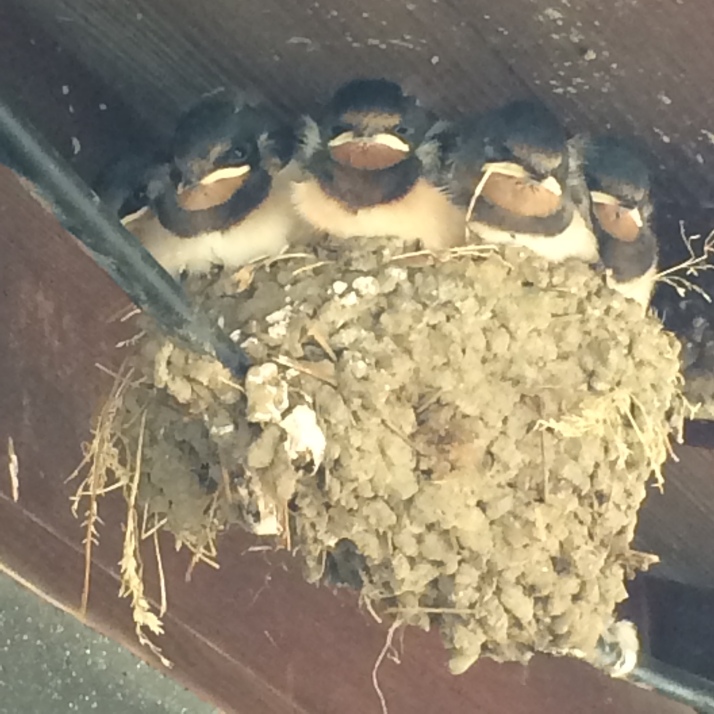
Packed into the nests sometimes up to six chicks at a time were swallow chicks, their parents flitting back and forth but never dangerously close enough to the abundant people walking by. The adult swallows make their presence known enough to let you know that they are there. I didn’t see anybody behaving irresponsibly towards the birds and I think much like myself for the most part, people were just astonished to be able to see the chicks up close.
In retrospect it seems I haven’t actually taken a picture looking down the street with the preserved tea houses for which I apologize and find very strange that I didn’t take a picture of!
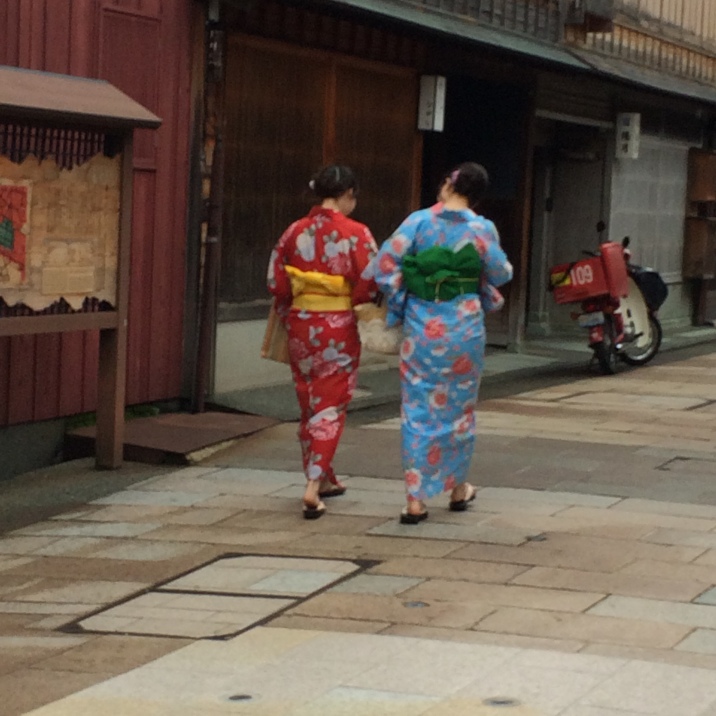
These girls are wearing yukata, lightweight summer kimonos.
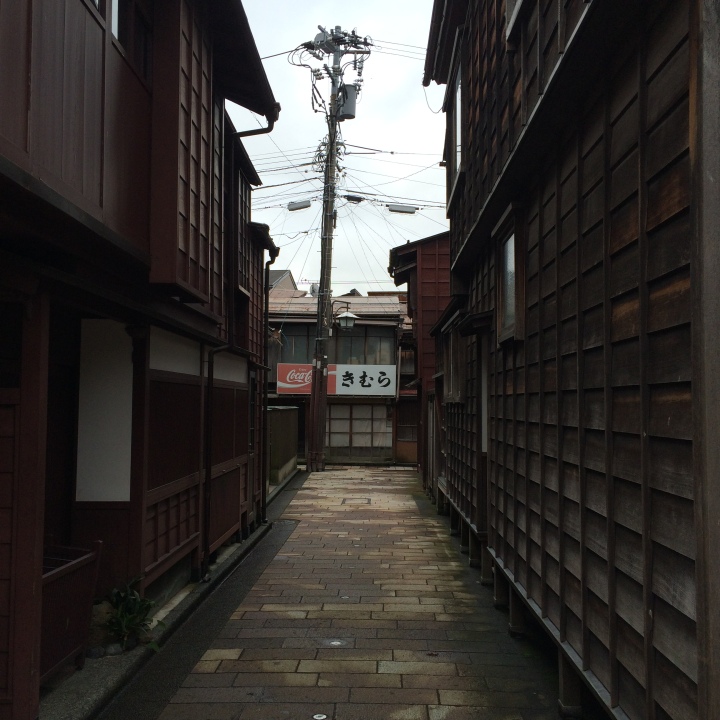
Not the main street but one of the smaller streets off from the main one but gives a good feel of the architecture there.
I decided to try one of the traditional experiences and chose the Sakuda Gold Leaf Shop, from the street it’s dominated by their showroom/shop which has plenty of examples of gold leafed objects for sale. The experience is advertised as a do-it-yourself gold leaf application and takes around an hour to an hour and a half.
You are shown various items that can have gold leaf applied to them from boxes to plates, the price is different according to the size. I chose a small lidded box, then you’re taken into a small space with tables to work on, since I was an early bird I was able to walk in and have a go without a reservation but it might be better to reserve ahead depending on when you go and if you want to do it.
The first thing to do was to choose a design, in the top right of the picture you can see the corners of various metal stencil sheets, I chose this rabbit and moon design which you then draw onto a masking tape square. Then you cut the design out, so far easy enough. Then you need to apply the tape to the lid of the box, all of this is done under the watchful eye of an old gentleman who is leafing items to sold in the shop. Once you’ve completed the stencil cutting, he takes your item from you and applies the gold leaf, I had wondered how that would actually work since it needs some dexterity and I could imagine the delicate sheets going all over the place in the hands of clumsy tourists like myself. With leaf applied, you’re then asked to wait half an hour, I wonder if this is a ploy to make you go back in the shop. 😉
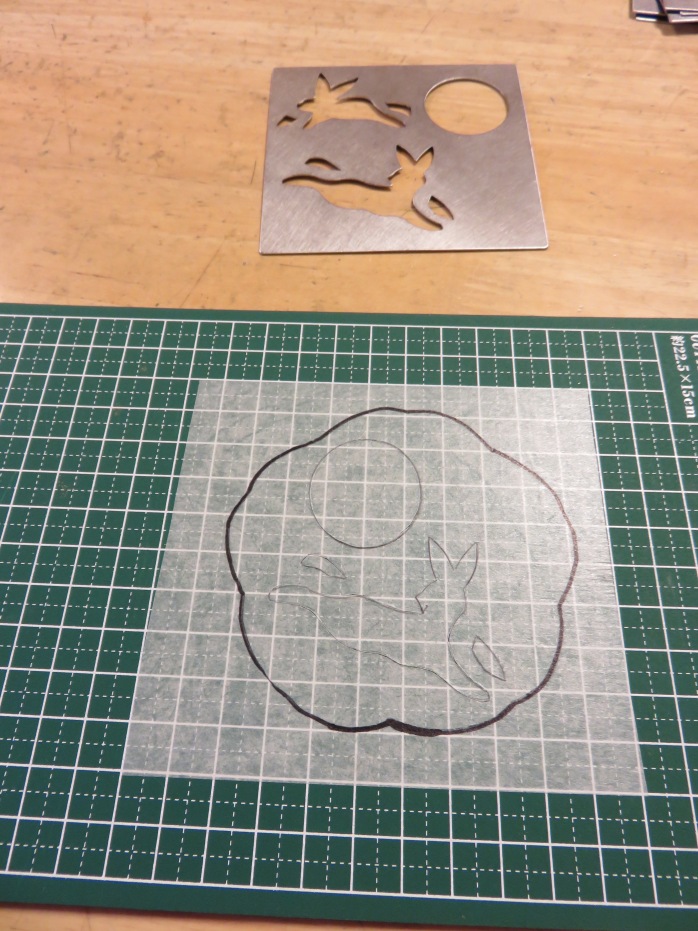
Here’s the finished box with the rabbit and moon design I selected, they pack it up for you and instruct you to leave it for 2 weeks before applying nail varnish topcoat. (It took me a bit of time finding top coat in the supermarket, I now have a small bottle of topcoat that I don’t use!) Not bad and a nice memento to have of my brief visit…
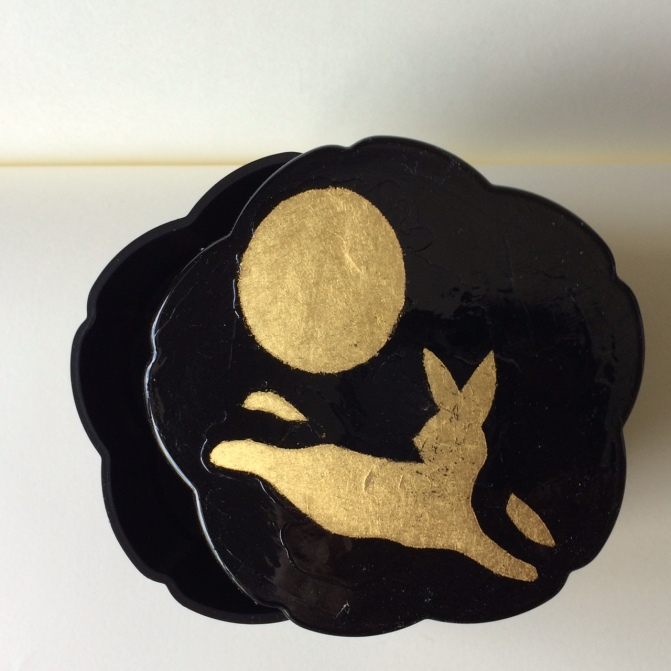
That said I did actually buy a couple of items while waiting though fully aware that due to trying to very limited luggage space for the next 3 weeks that I would have to limit my purchases to small items only. This was actually a good thing in the end because it meant I had to be very selective in what I did buy.
This small Daruma that I bought, came in various sizes, this being the smallest. While I waited for my daruma to be boxed and up and until my box was ready, I was served some cold summer tea which also contained tiny bits of gold leaf!


This is the small daruma that I bought.
(The following text is from Wikipedia: The Daruma doll (達磨 daruma?), also known as a Dharma doll, is a hollow, round, Japanese traditional doll modeled after Bodhidharma, the founder of the Zen sect of Buddhism. These dolls, though typically red and depicting a bearded man (Dharma), vary greatly in color and design depending on region and artist. Though considered an omocha, meaning toy, Daruma has a design that is rich in symbolism and is regarded more as a talisman of good luck to the Japanese. Daruma dolls are seen as a symbol of perseverance and good luck, making them a popular gift of encouragement) came in various sizes, this being the smallest.
I made my way from Higashi Chaya with the intention of having a leisurely lunch but for some reason due to impatience on my part for a bus that wouldn’t arrive, I decided to try to get one more attraction in even if it was briefly. Rolling up my shirt sleeves I walked on, hen the sights are new, I find myself able to walk relatively grumble free because natural curiosity will distract me from the heat or the strain.
A few people and not just those at the tourist office in Kanazawa had recommended or at least told me to try to see Kenrokuen Garden. The garden originated more than 300 years ago and is one of the most famous gardens in Japan, originally the garden of the secondary residence of the feudal lord, it attracts visitors year round. I have a feeling that my speedy tour of the most photographed section did not do it justice. The rain also started to fall again calling time on my visit as well as my stomach starting to grumble at not having had any lunch.
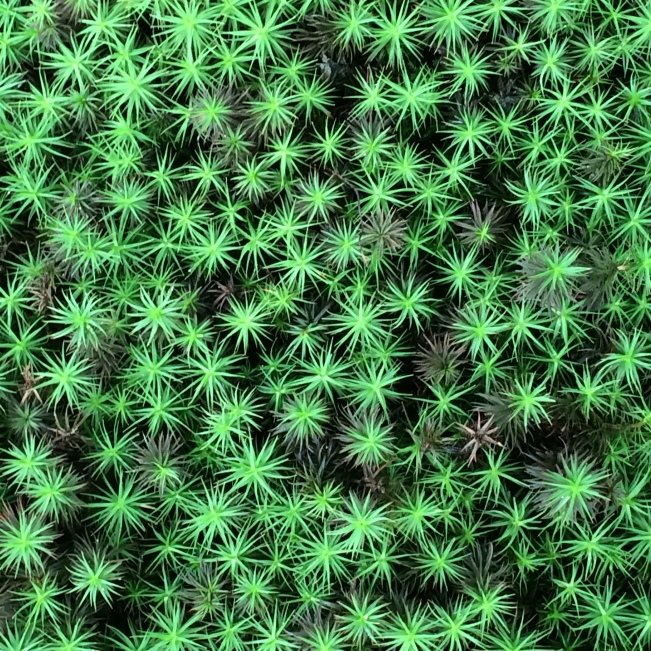
Detail of the moss found in the grounds of the garden, the star like pattern is something I found to be pleasing when seen in multiplied repetition.
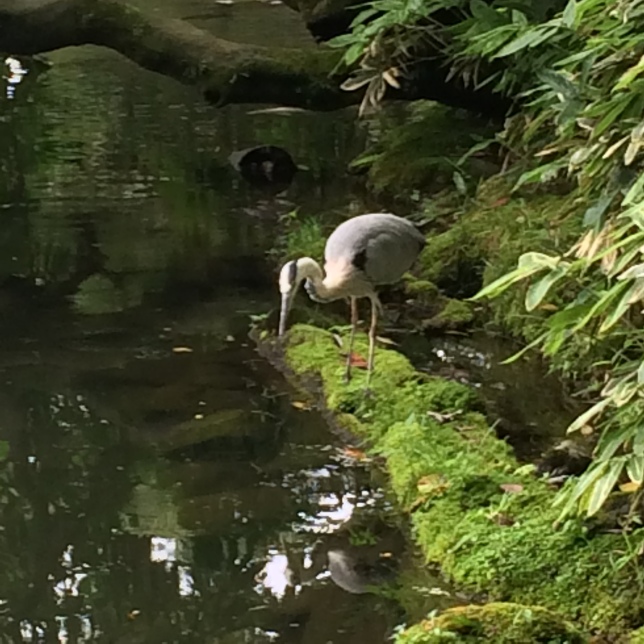
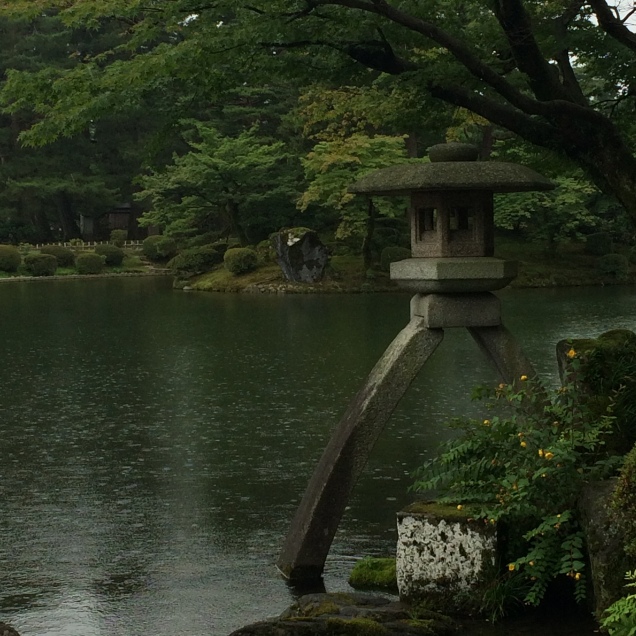
The Kotoji Toro, a two-legged stone lantern than is emblematic of not only the garden but of the city itself. (You can see the rain was back if you look at the surface of the water!)
I made my way back to the station and the hotel and had a late lunch in the shopping centre next door to the station. I chose a restaurant called Keisuke Ramen which was located in the Forus Shopping mall. My choice was a Shio (Salt Broth) Ramen set which came with fried rice and 3 gyoza, which cost 1180 Yen which is just under $10 or £6.50! Puts the eating ramen in London for £11 a bowl into perspective!
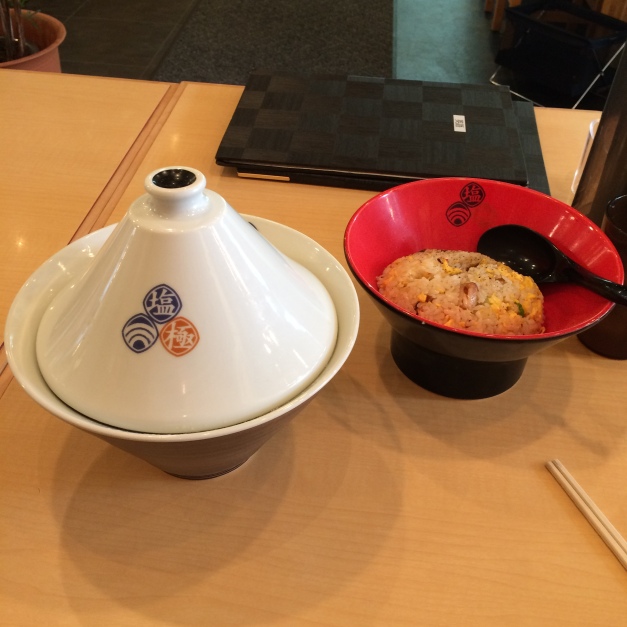
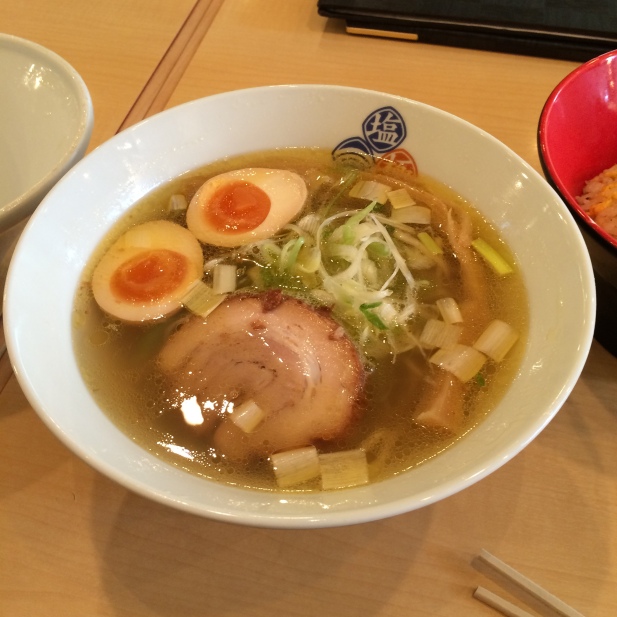
Satisfied with my lunch and since I was next door to the station, I collected my luggage and set about finding my train, platform and carriage with time to spare. I would be taking the:
Kanazawa to Kyoto Limited Express Thunderbird 32 (Yes, really, Thunderbird!)
Departure: 1519h
Duration: 140 minutes
Distance: 224.8 km
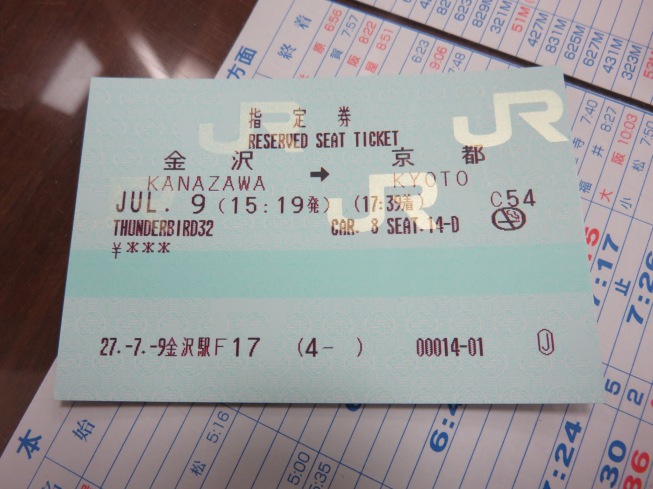
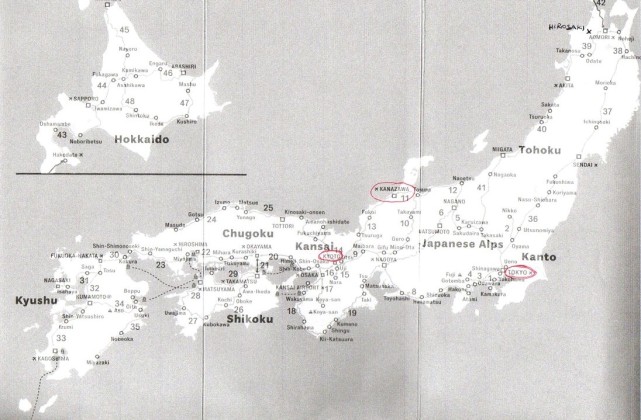 Please click on the map to see it in detail, Kyoto is central section of the map below the bold type that reads Kansai.
Please click on the map to see it in detail, Kyoto is central section of the map below the bold type that reads Kansai.
No need for a bullet train this time but even this time the train the still huge compared to what I was used to in England, again I wish I could tell you about the scenery but it happened again and I slept for almost an hour and a half!
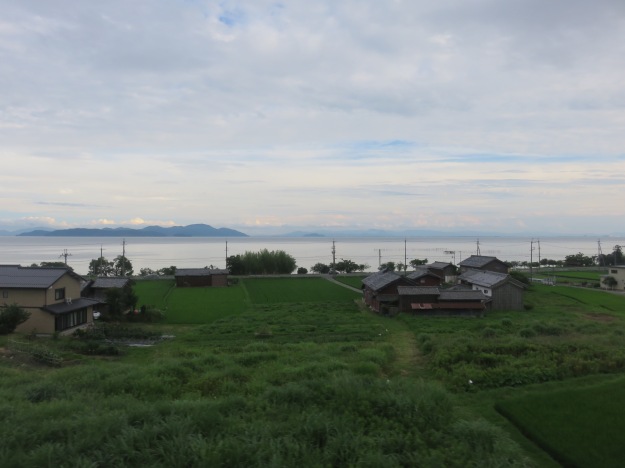
I have a feeling that is Lake Biwa which is some 30 minutes outside of Kyoto and somewhere perhaps I might explore and visit sometime in the future.
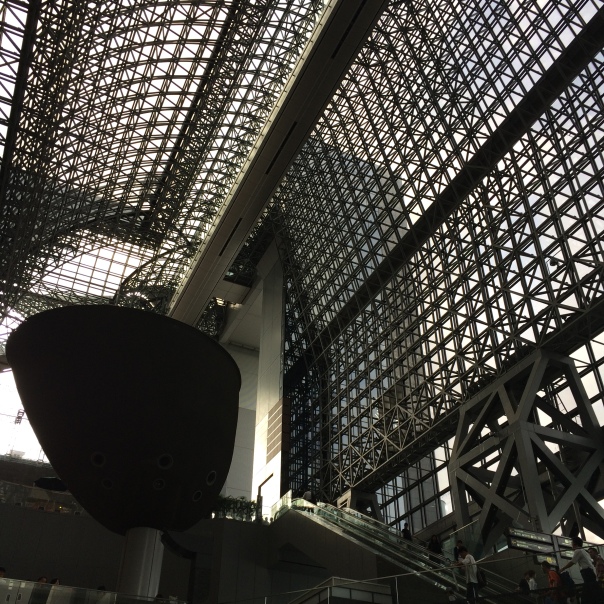
I arrived at Kyoto Station and despite a little recognition at being there before still felt somewhat surprised at the level of activity there. Kyoto was once the capital of Japan and today retains a strong identity for its temples, shrines, wooden houses and gardens as well as other traditional arts and crafts.
There are so many things to see and do in Kyoto that despite several visits there remain many places that I intended to to see but was not able to on this visit or on previous visits. Some of the more iconic images of Kyoto that you might know or might have seen will not be seen here since I had been to them previously in 2012. These would include places like Fushimi Inari, with their seemingly endless red torii gates which I would recommend going to and did consider going to again but didn’t this time round.
I booked into the Hotel Unizo Kyoto Shijo Karasuma which was a short subway ride from Kyoto Station, thankfully Kyoto’s subway system is nothing like Tokyo’s spaghetti consisting of only two lines! The hotel is from what I gather a new build so everything was very clean, I didn’t specify where I would like my room though and the frosted window opened partially to reveal an apartment block next door, the room was quite cramped and if anything had too much furniture in it. There was no wardrobe to speak of just some hangers extending out from a couple of poles, I used a small round table for my suitcase and headed out. The location of the hotel is minutes away from the main shopping streets where there plenty of restaurants and branching off more streets with restaurants and shops, it was all somewhat familiar and I even found the branch of Loft that I had mistaken to be in Tokyo, in anticipation of the hot weather to come and with the added bonus of a sale I bought myself a cap.

What I hadn’t realized when making my itinerary was that the Gion Matsuri was coming up in Kyoto, of which I will go into in further detail in upcoming posts. It was both strange and familiar being back in Kyoto, the air was humid, the voices a mixture of American English, Japanese, Chinese, Korean, French and Spanish in and around the streets.
I chose to eat Okonomiyaki that evening, which is a savoury type of pancake which is made with various ingredients and cooked on a hot plate, in some places it’s cooked for you, in others you cook it yourself. The batter is made mainly from water, flour, eggs and cabbage. To this then different ingredients like pork, squid, spring onions can be added in any combination, yakisoba (fried noodles) can also be incorporated.
I went to a restaurant called Hana Tanuki.
I ordered the Special Tanuki Okonomiyaki although first things first I did have this… 😉 🙂
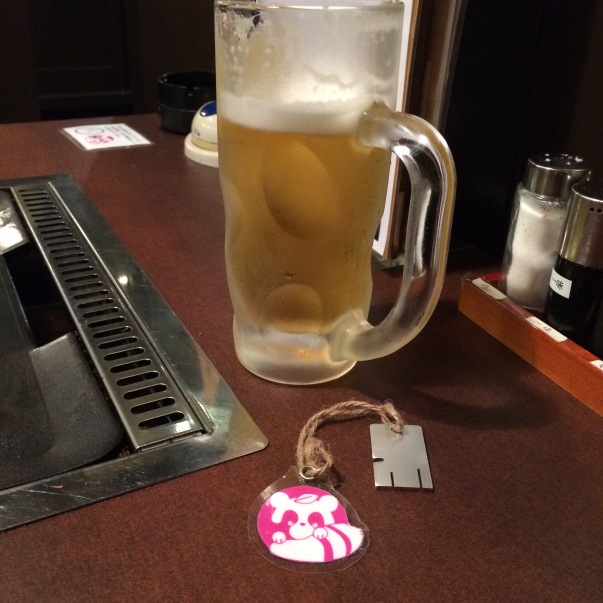
I can’t remember which mix I had with my okonomiyaki and I suspect I might have eaten something else as well…

With my belly full and buoyed with a nice cold beer or was it two, I ambled back to my hotel and picked up a couple of bread rolls from the nearby convenience store for breakfast and slept well.
Please note that any advertisements shown below my posts are put there by WordPress, not by me. I am not responsible for whatever product or service is advertised and it being there does not mean that I endorse or recommend it.
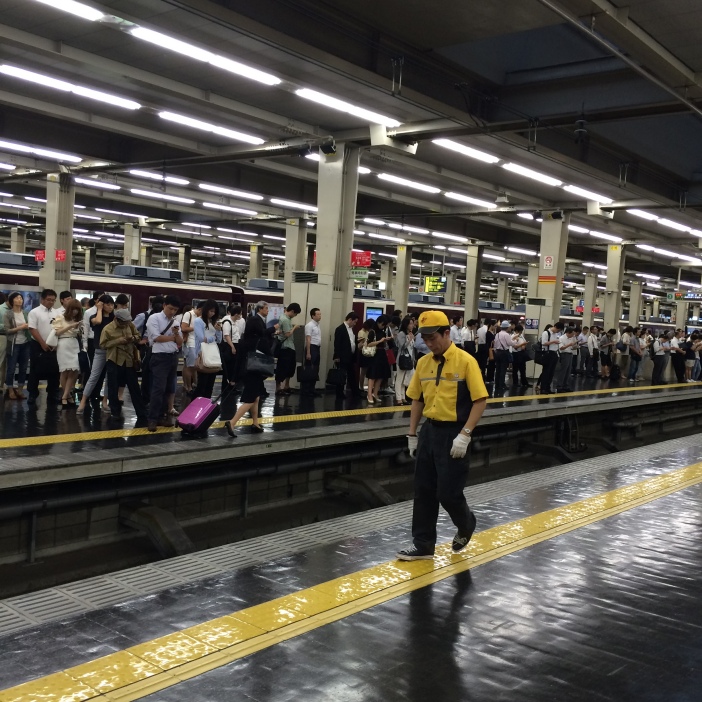
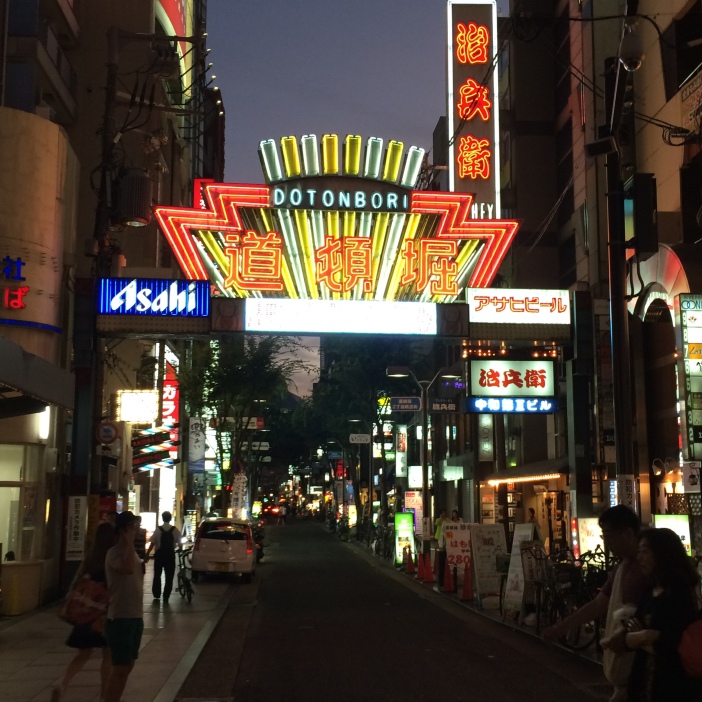
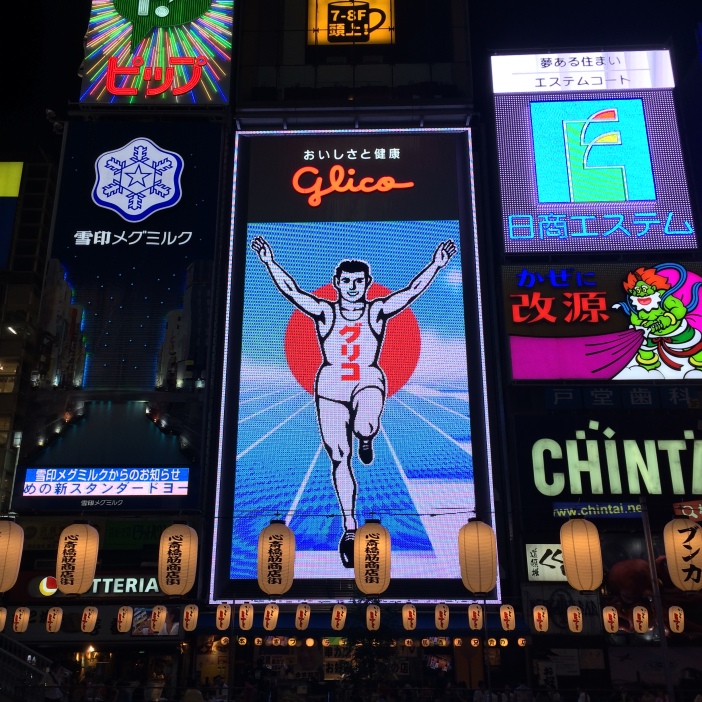

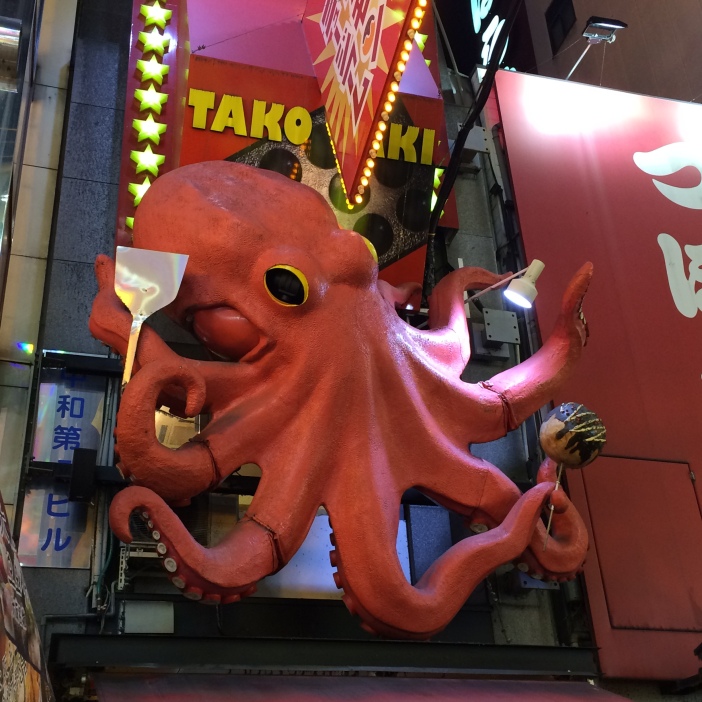
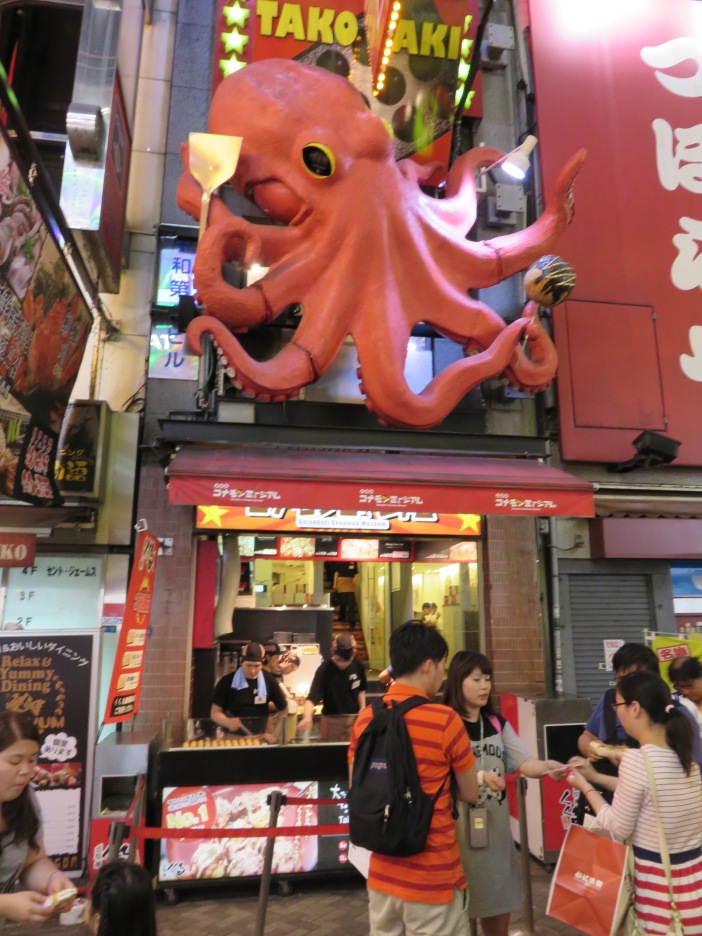

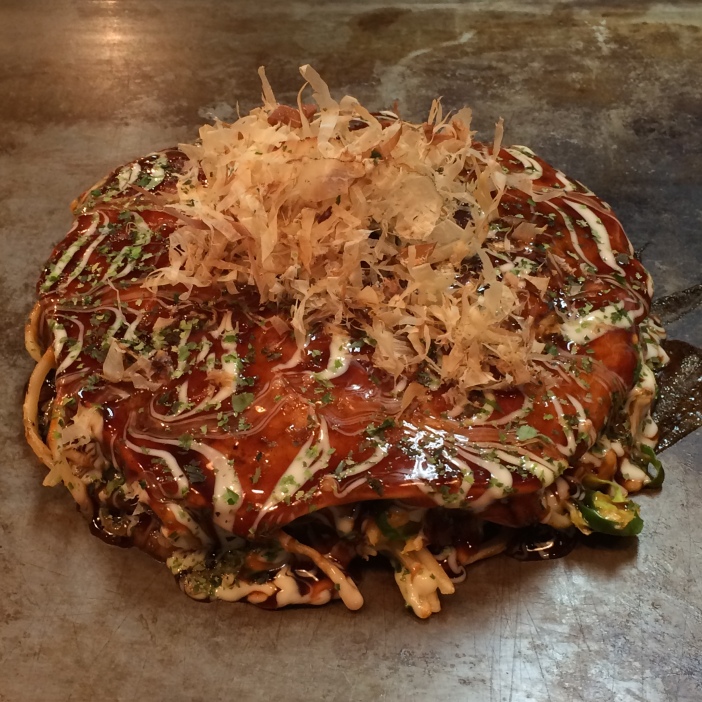
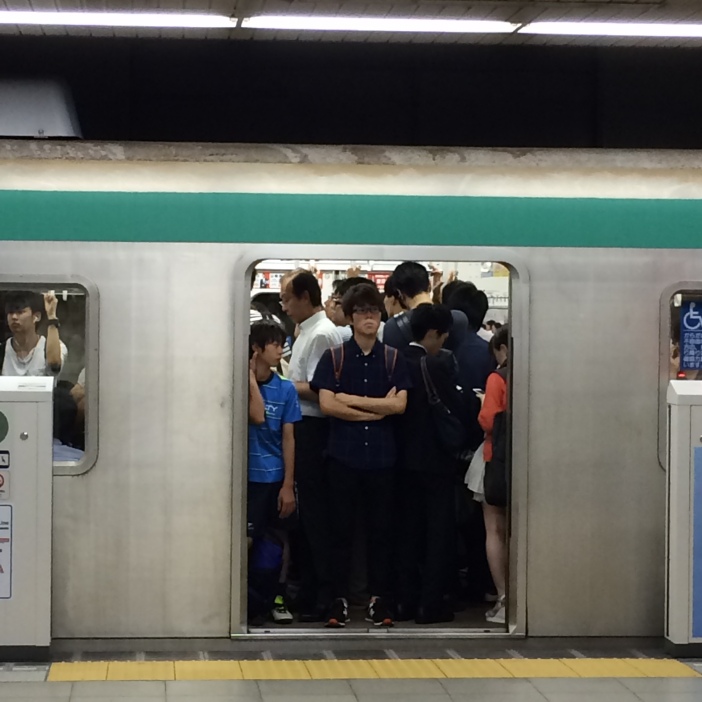
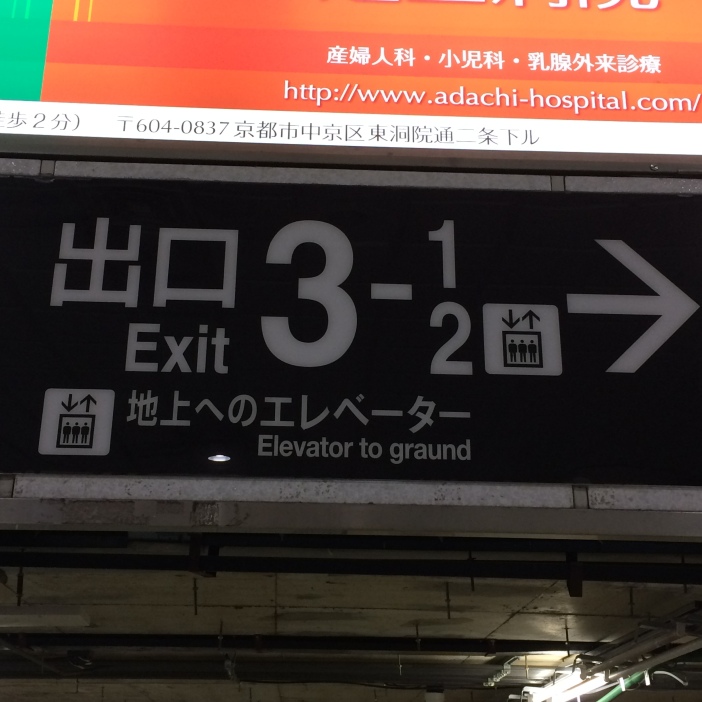
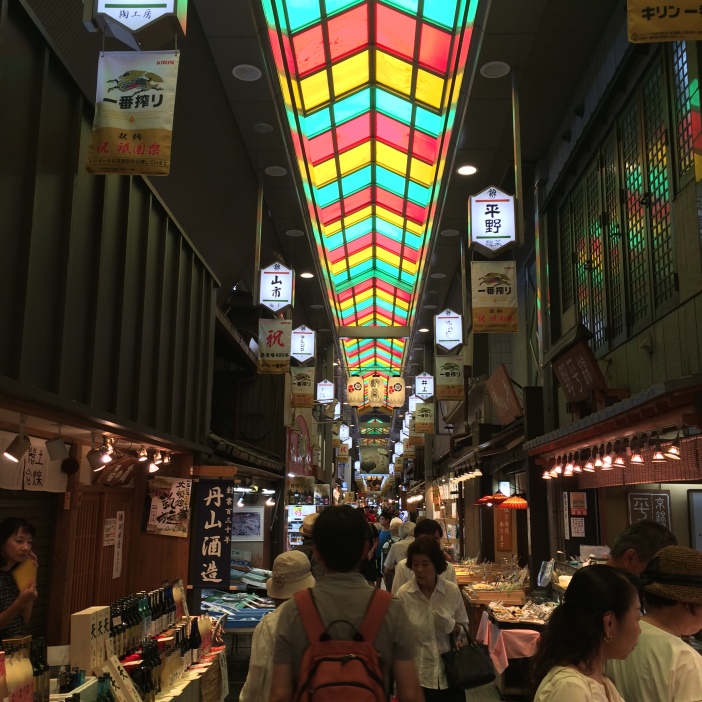
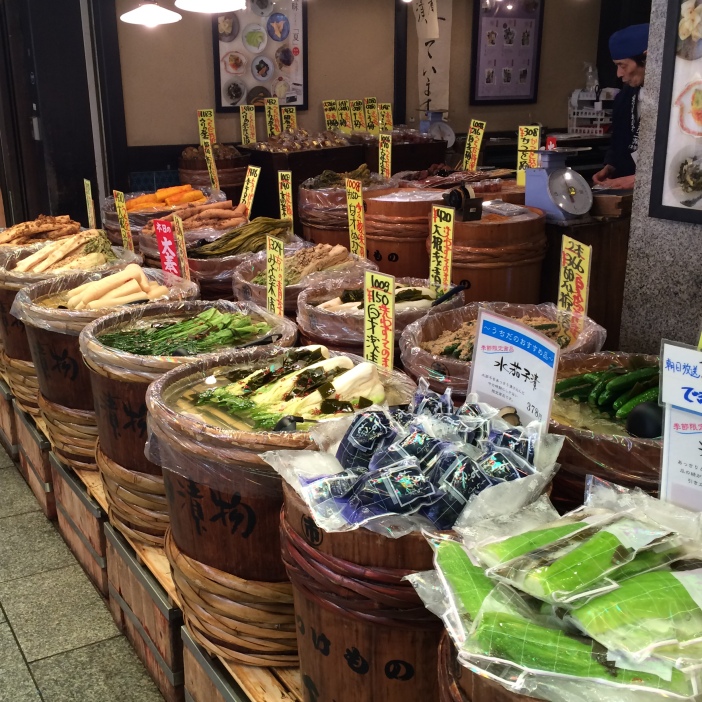

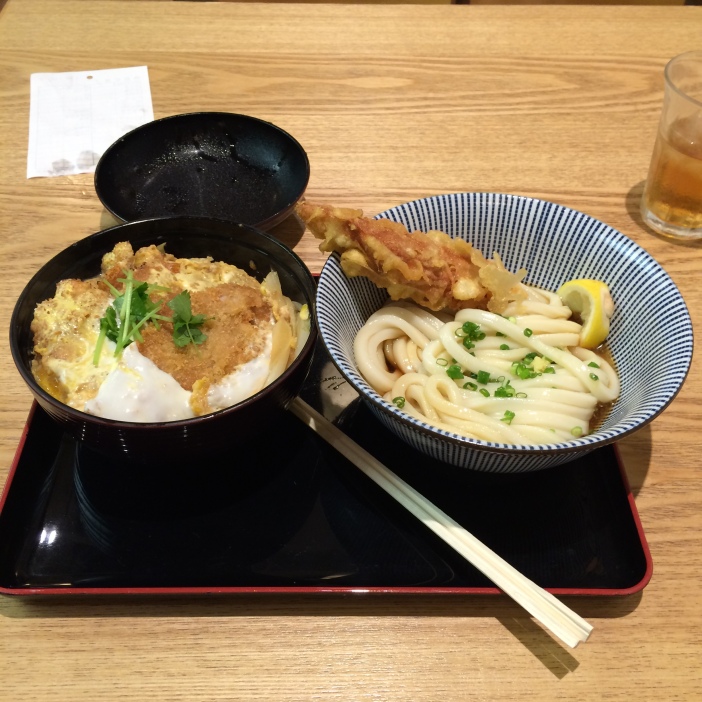
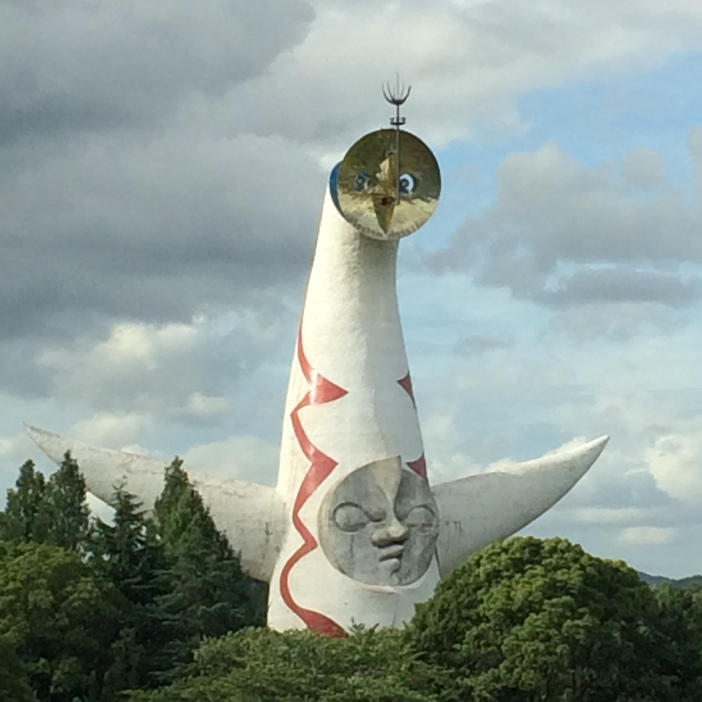 Taro Okamoto’s Tower of the Sun.
Taro Okamoto’s Tower of the Sun.